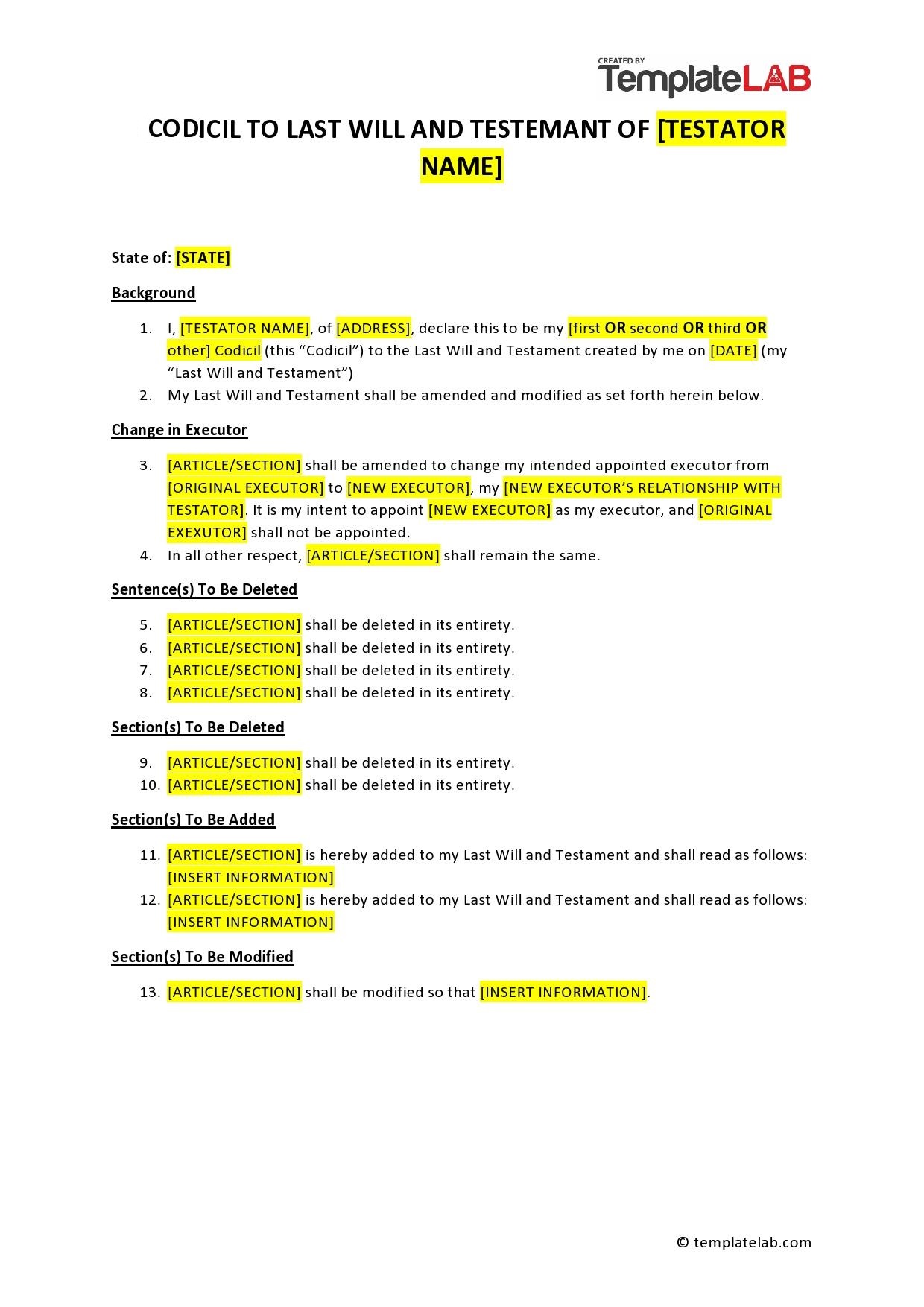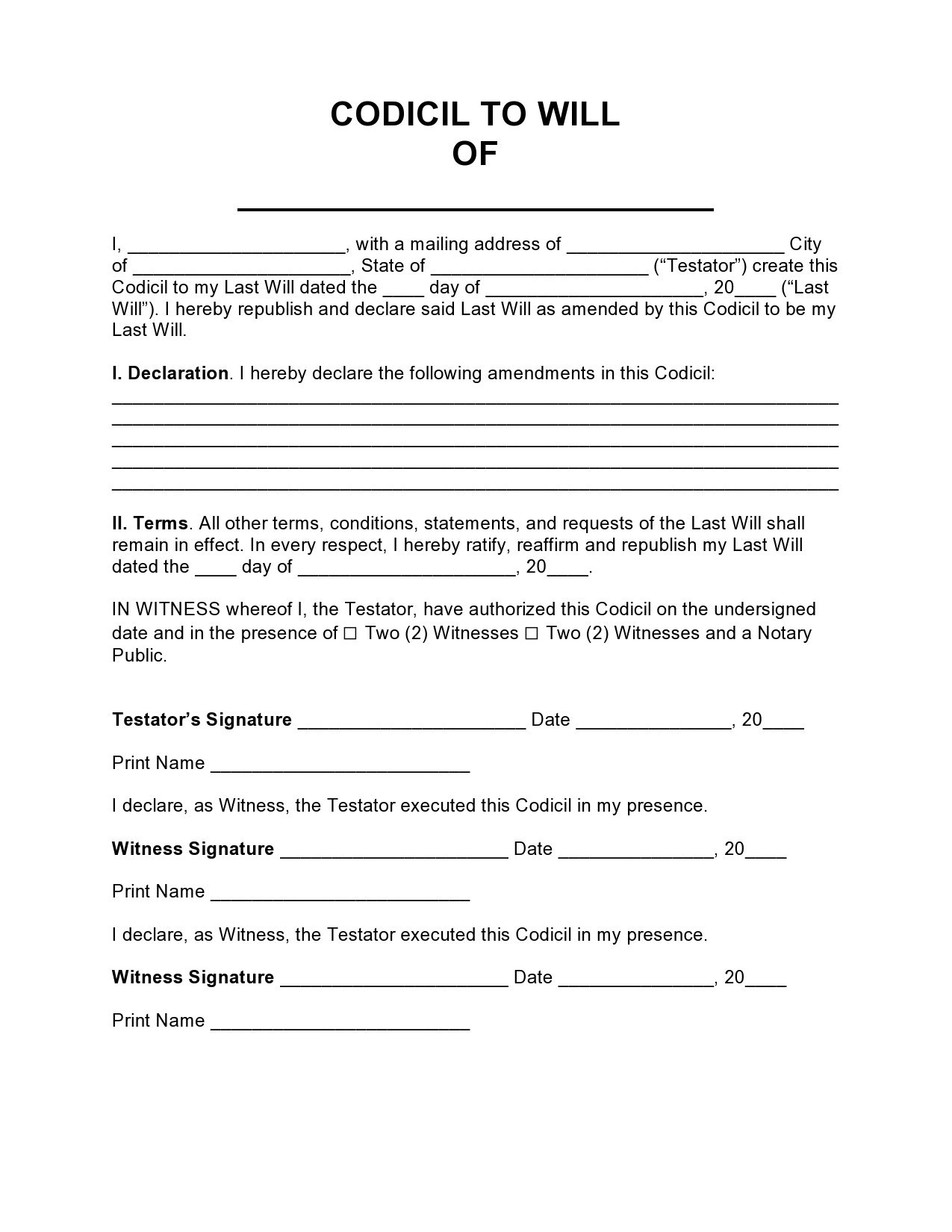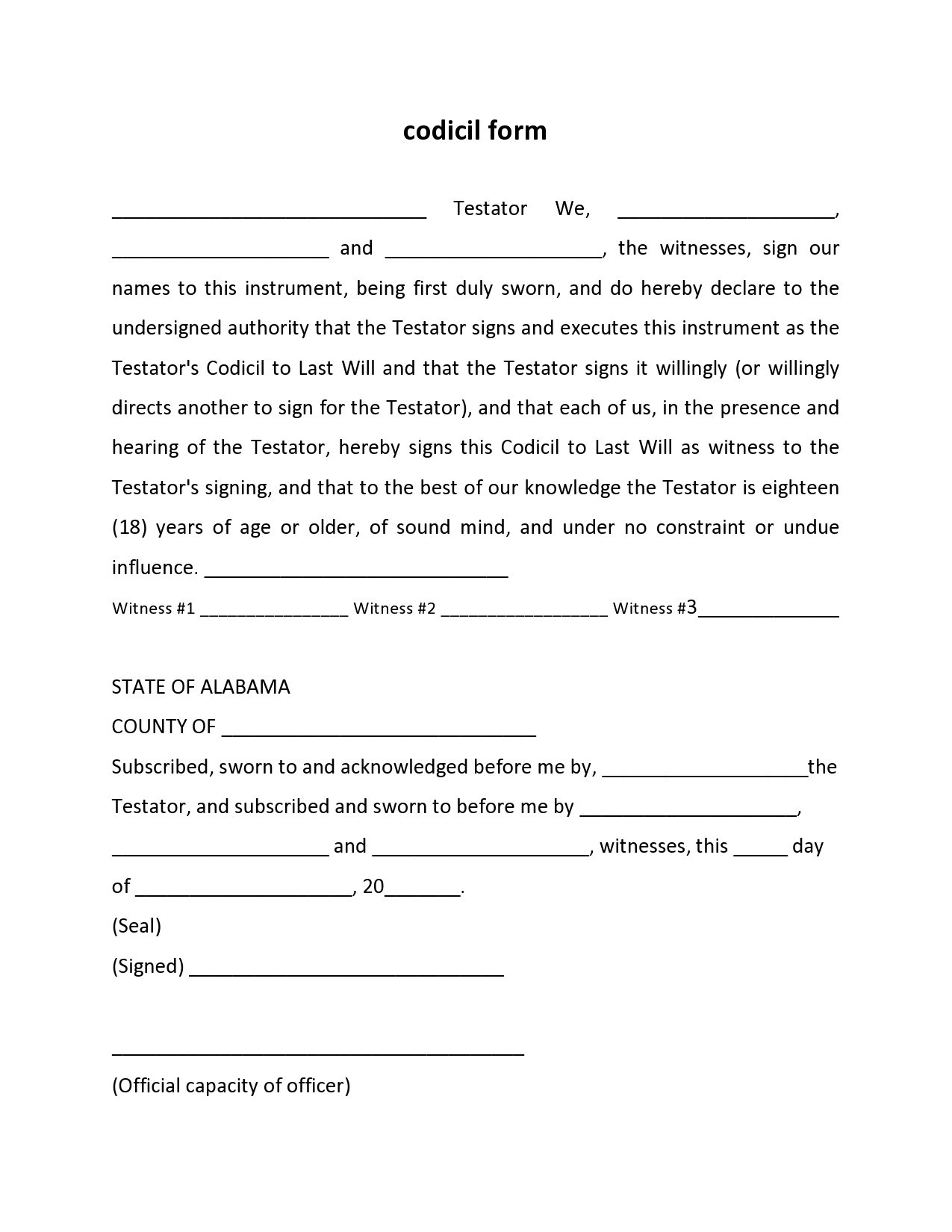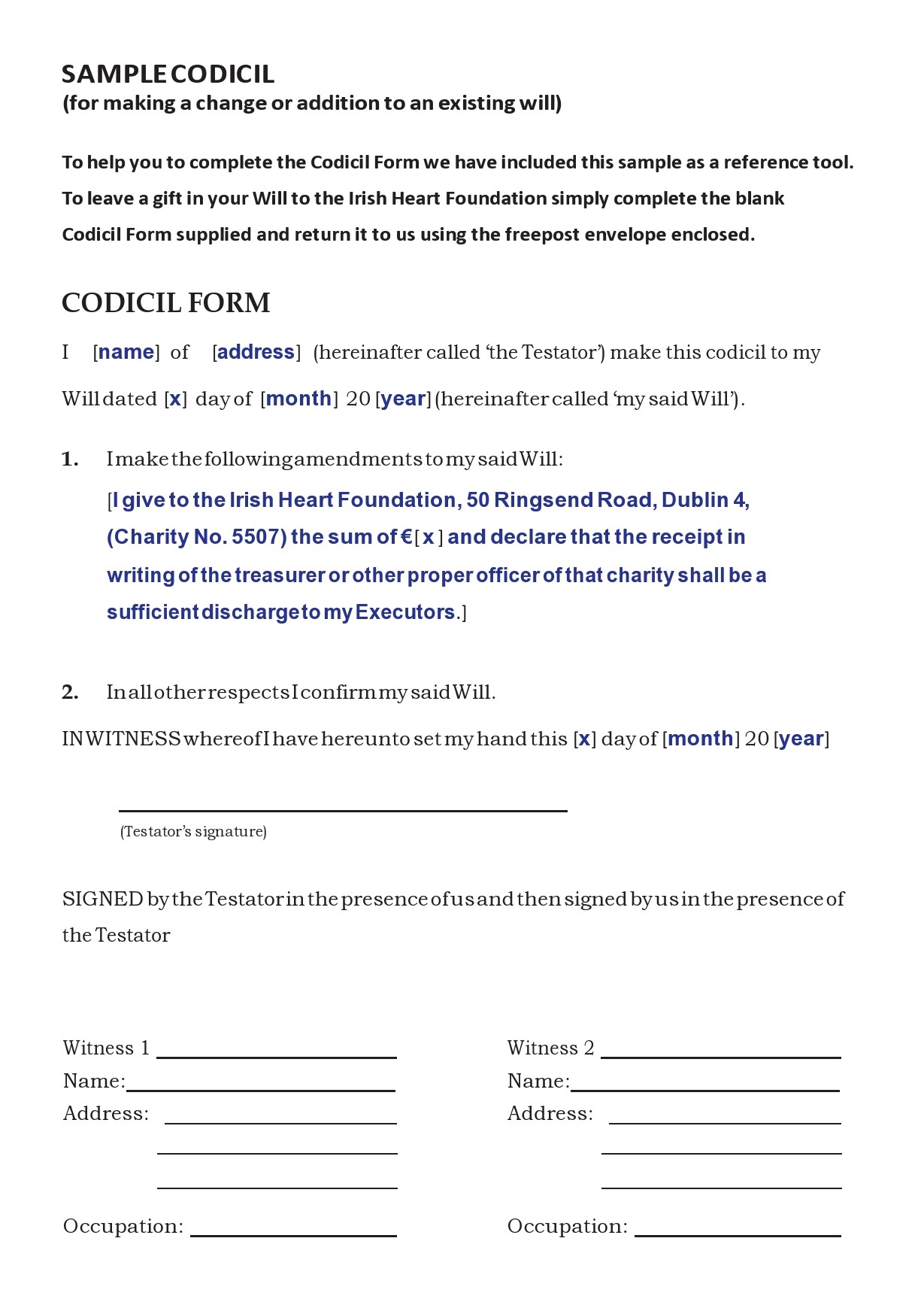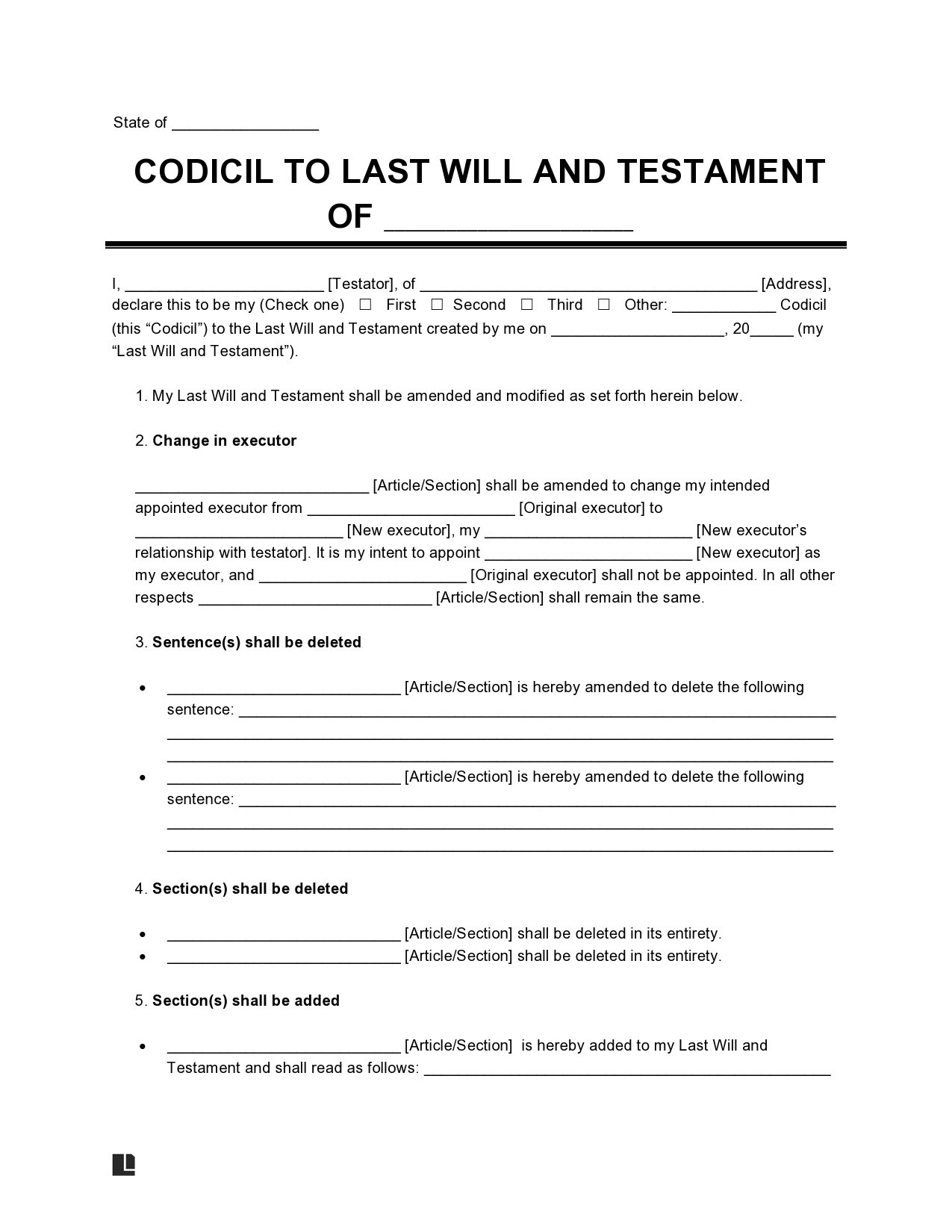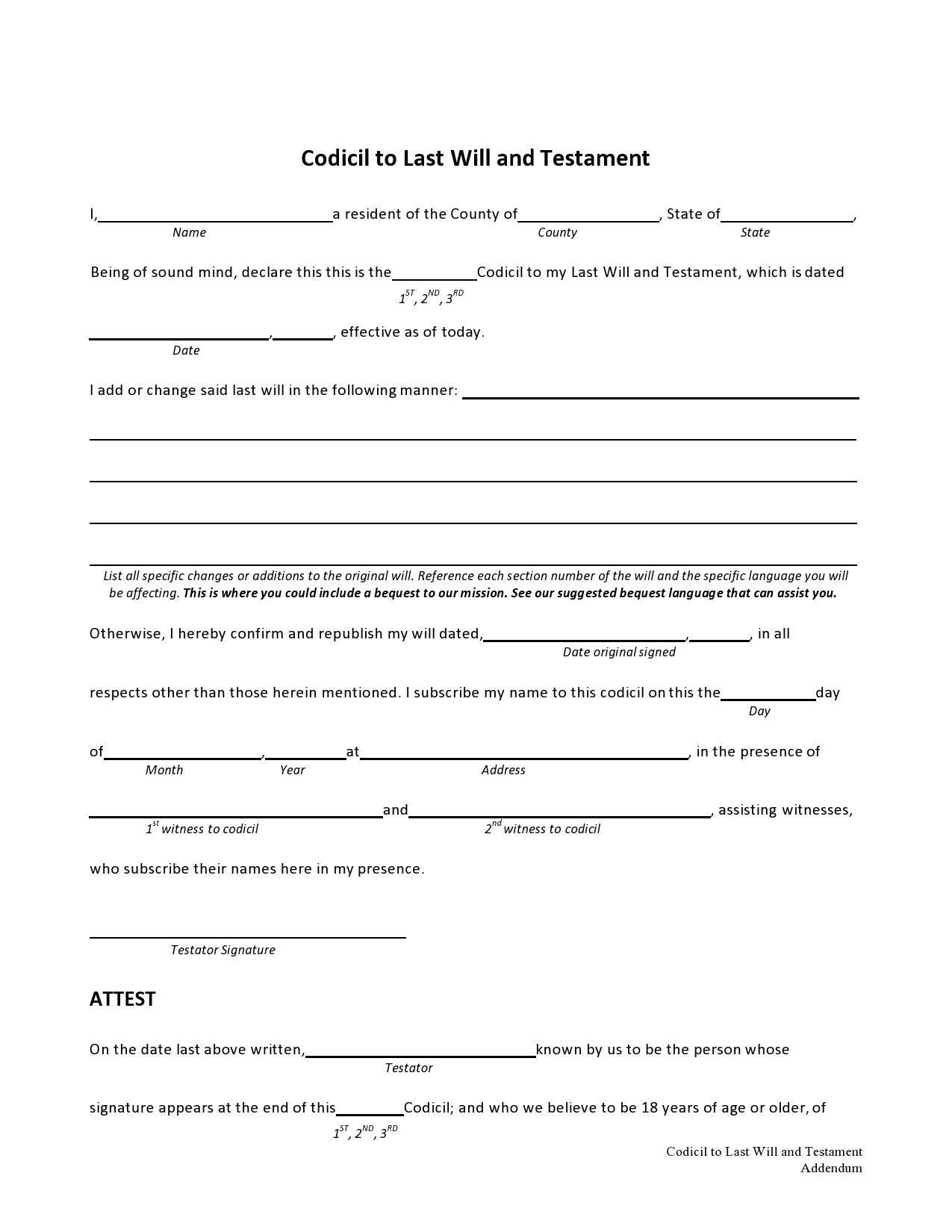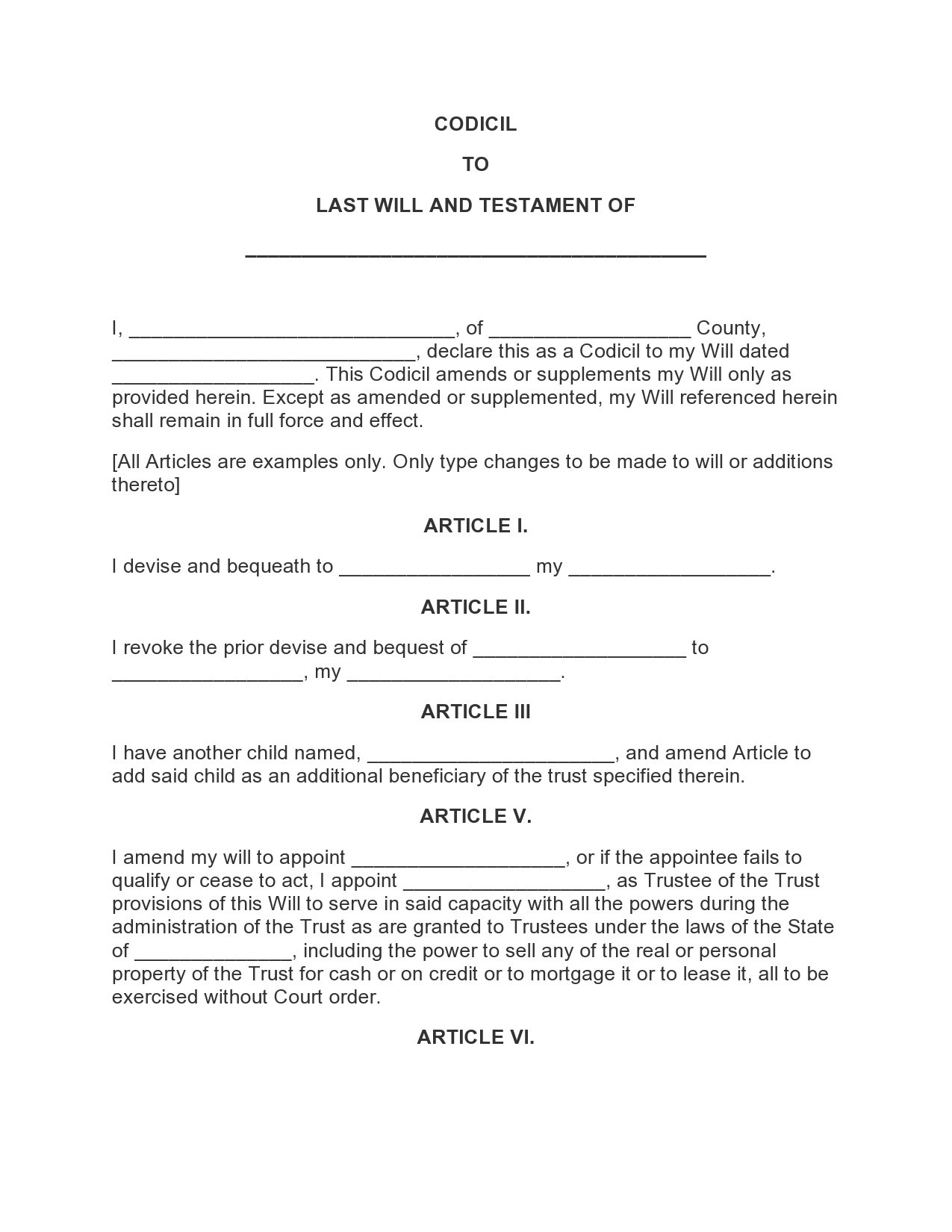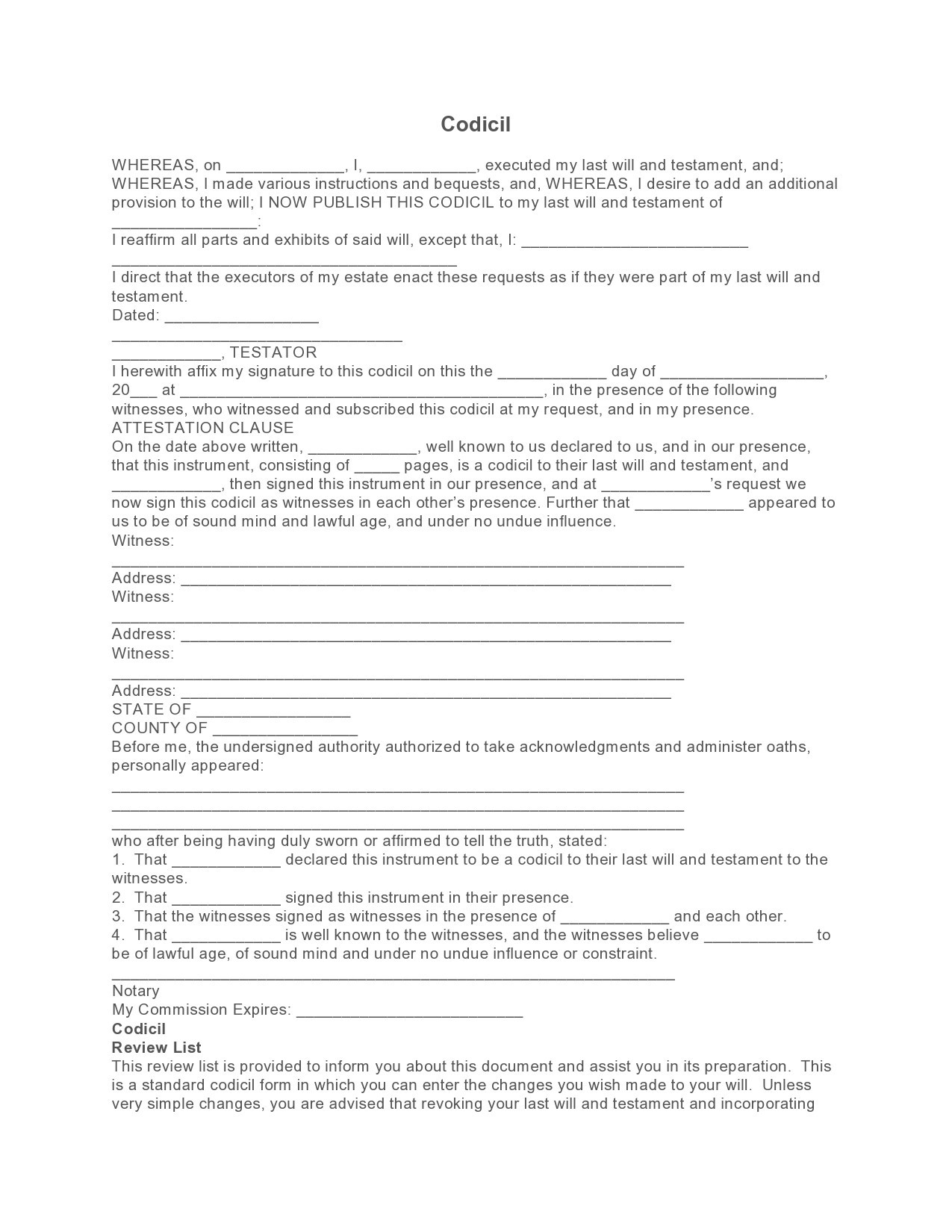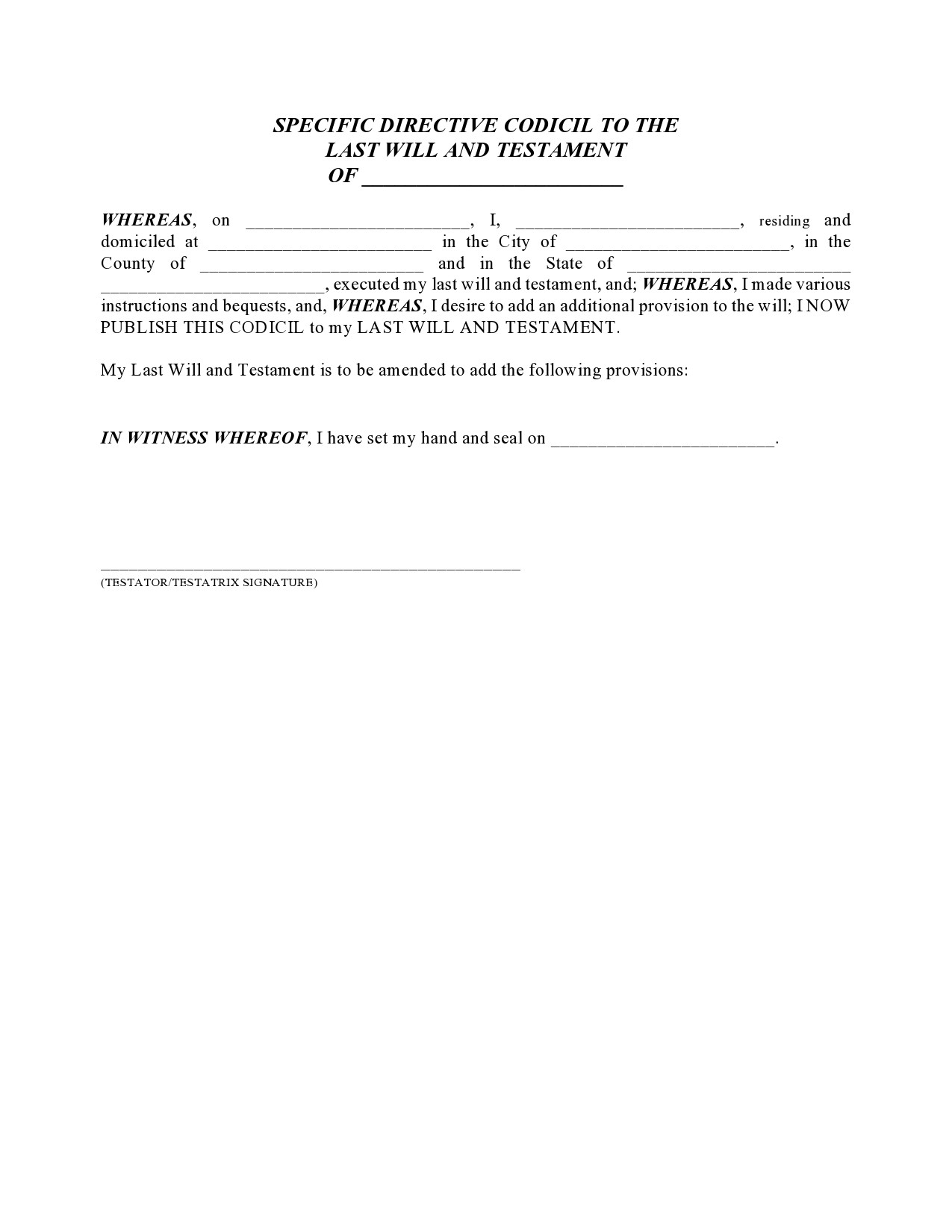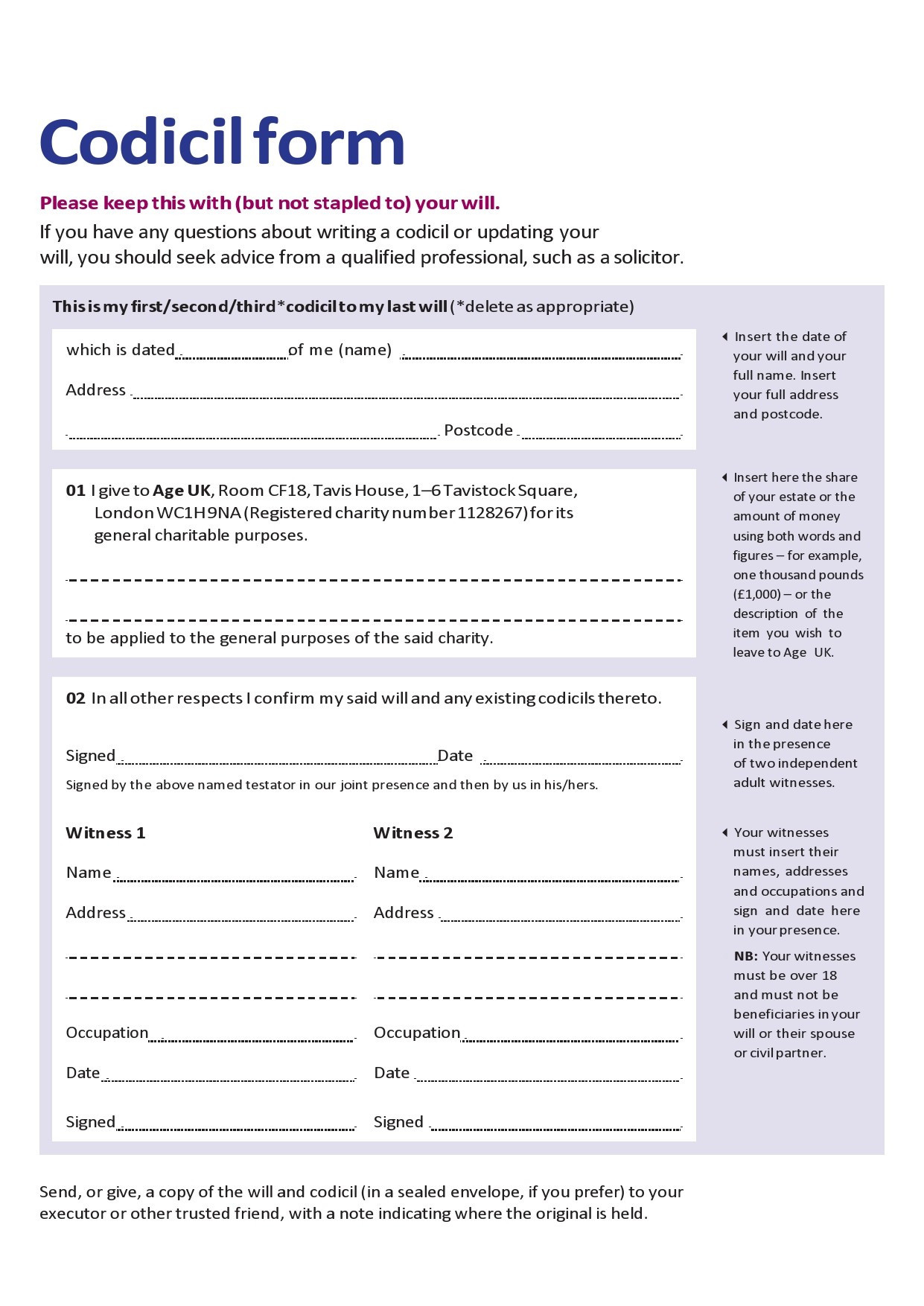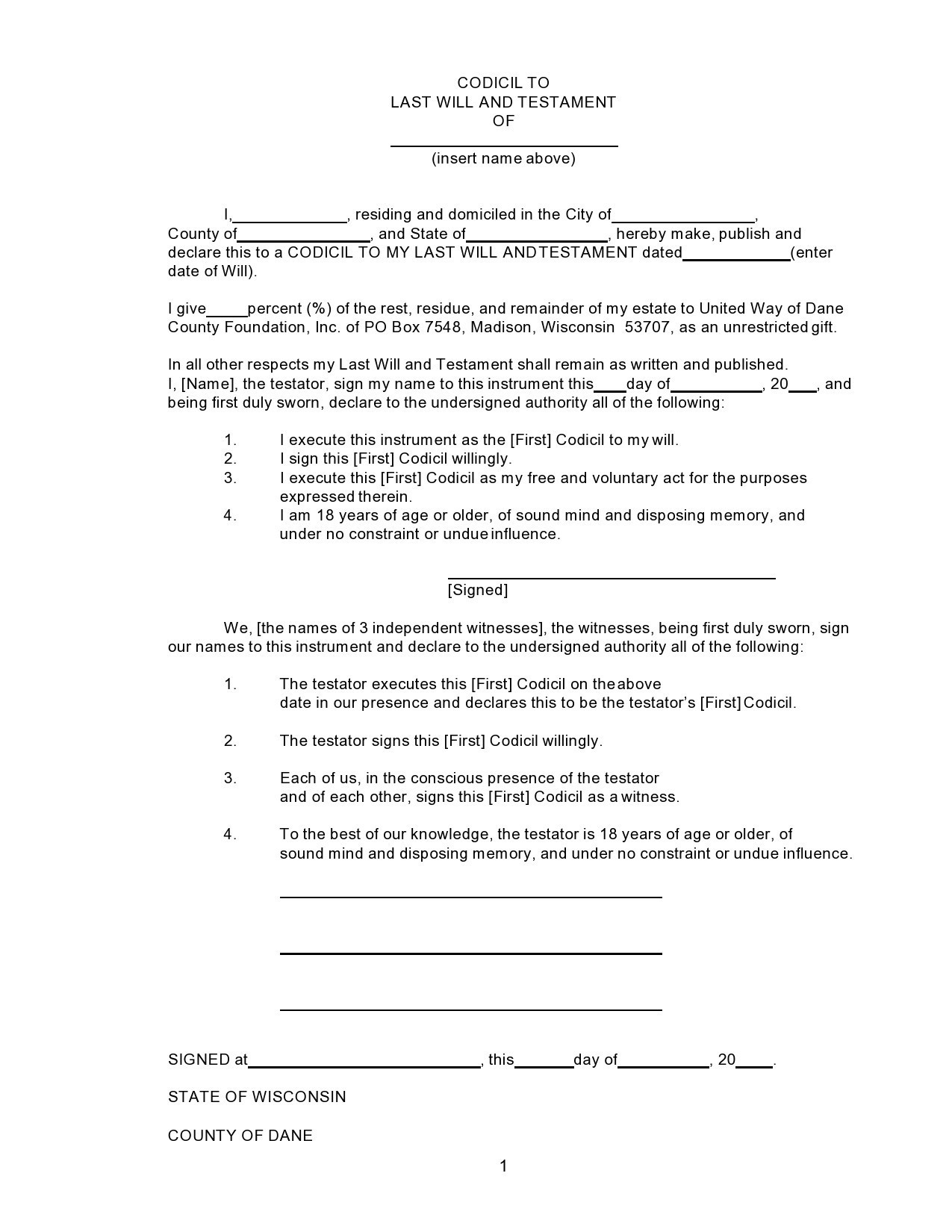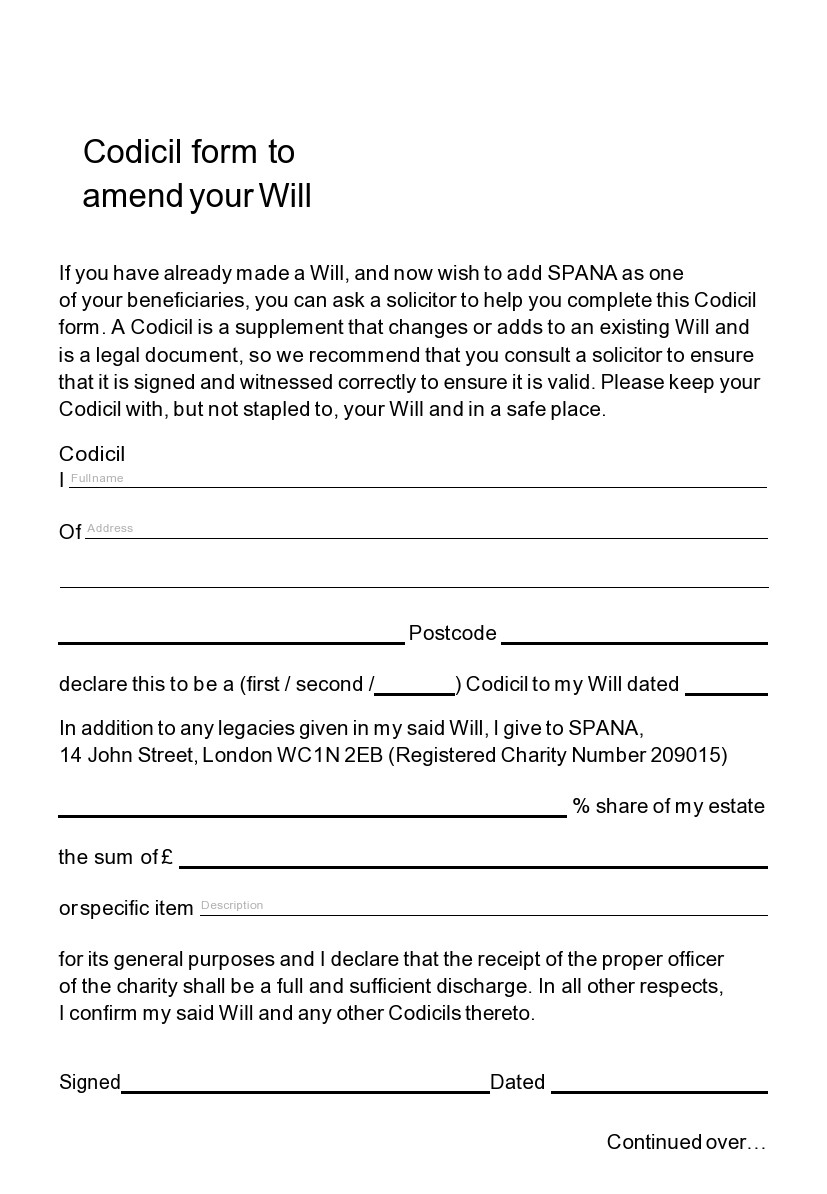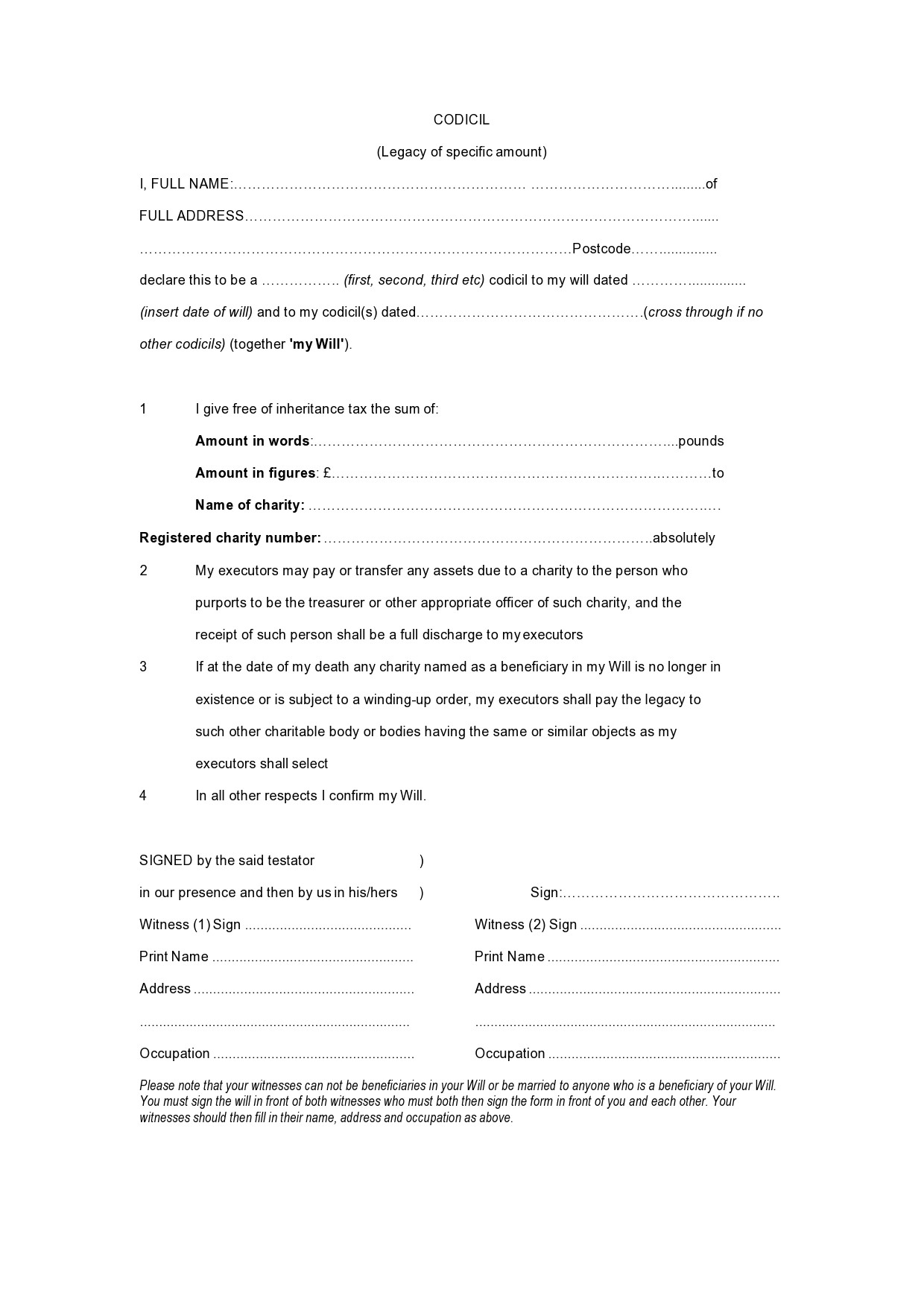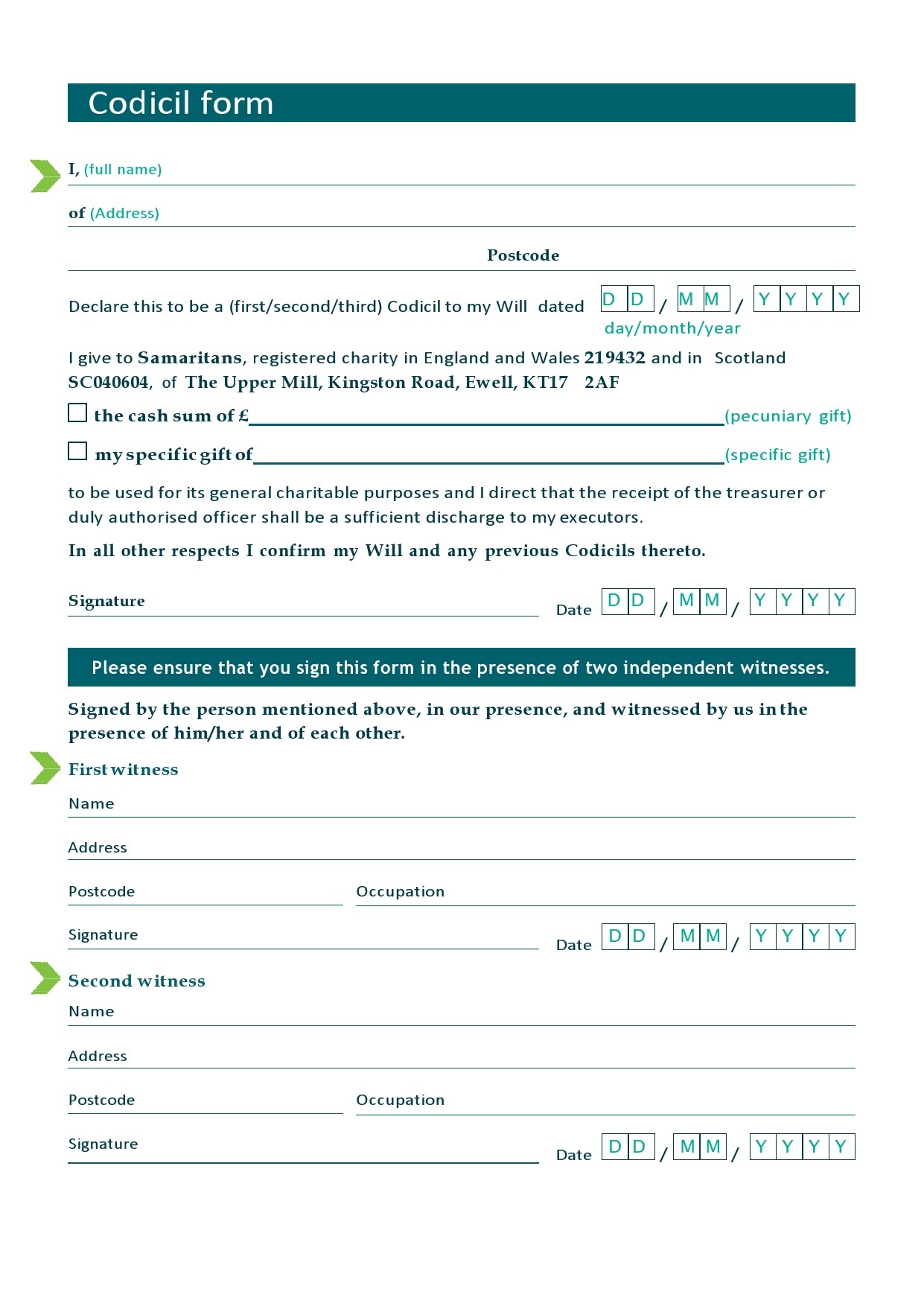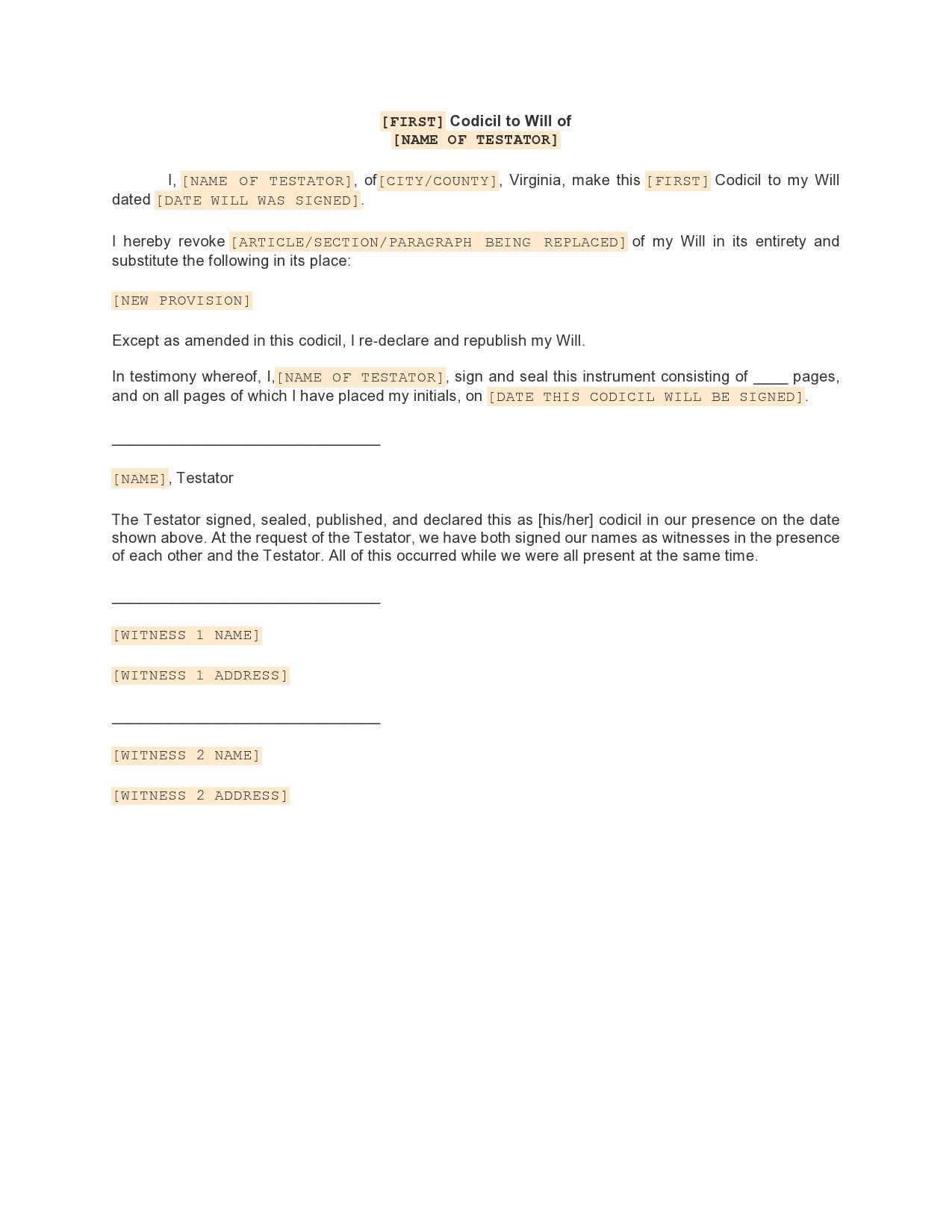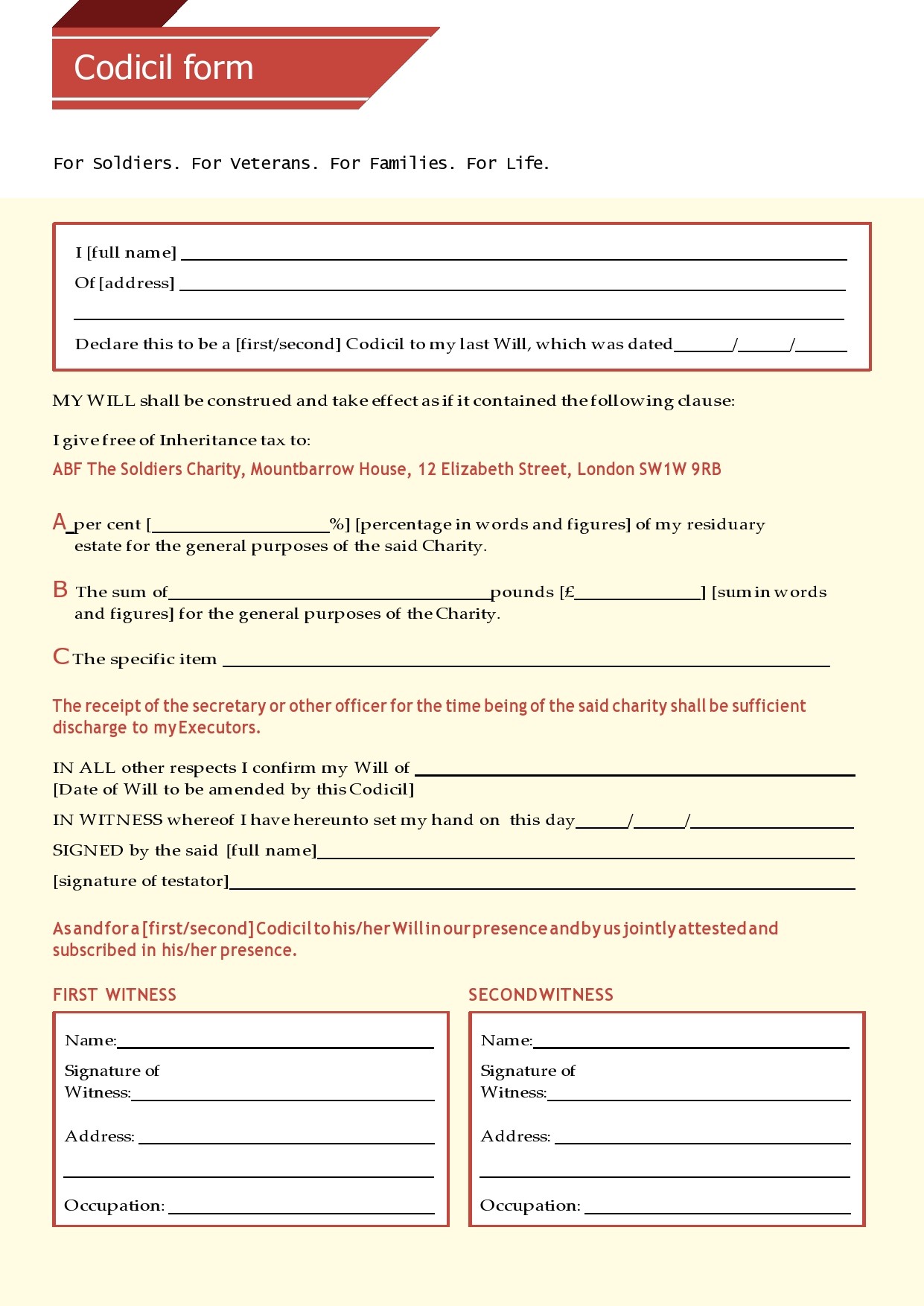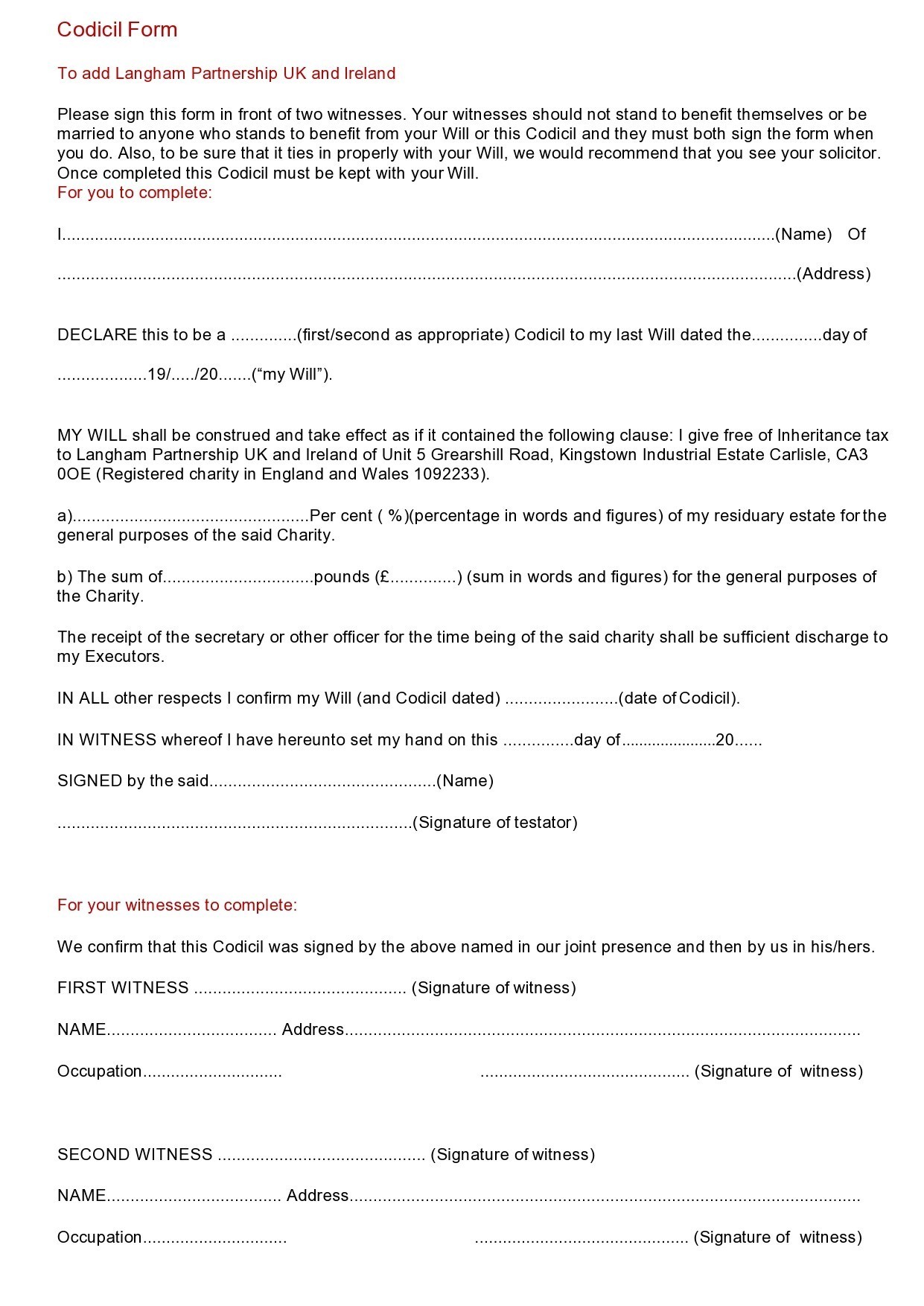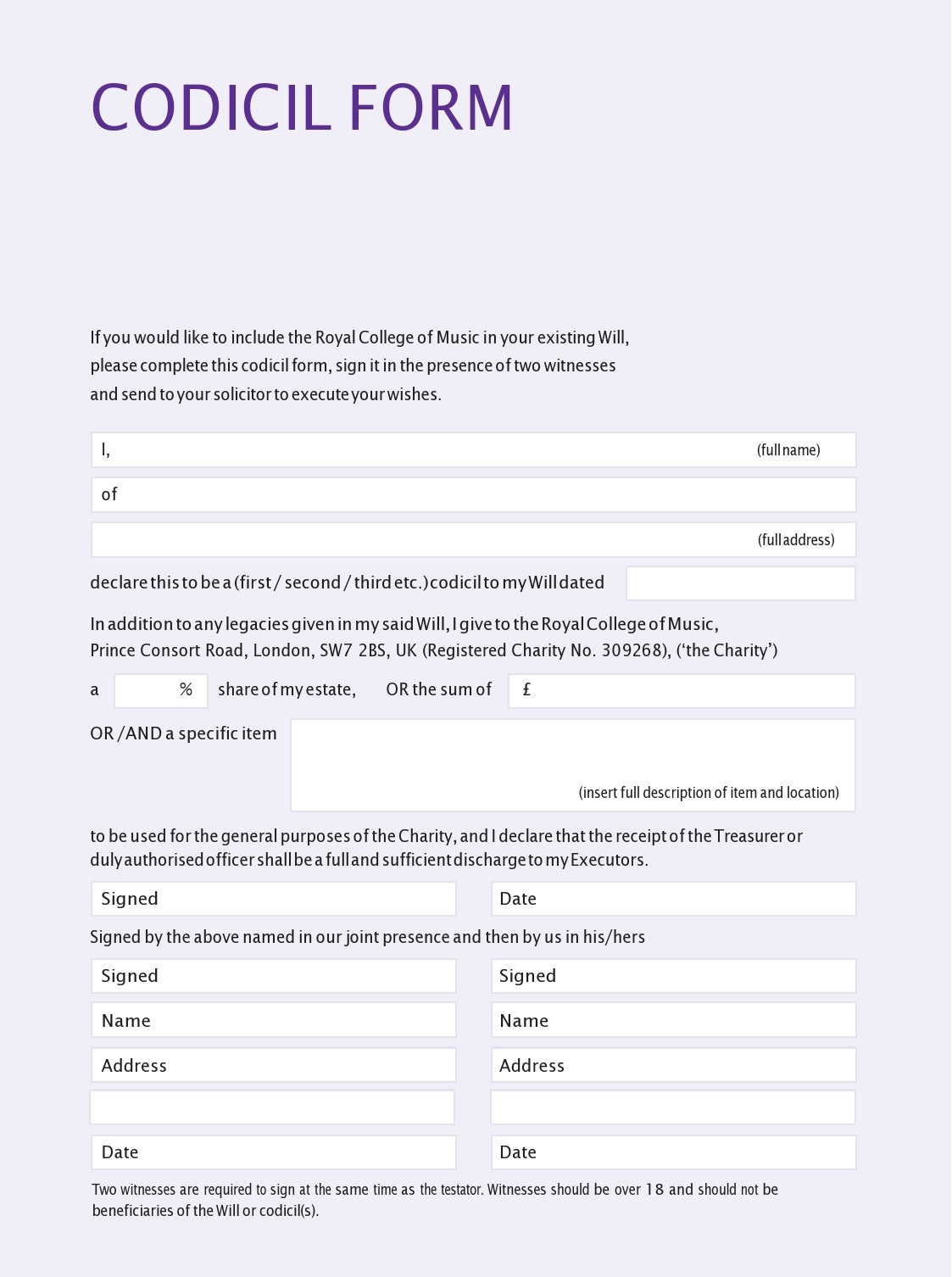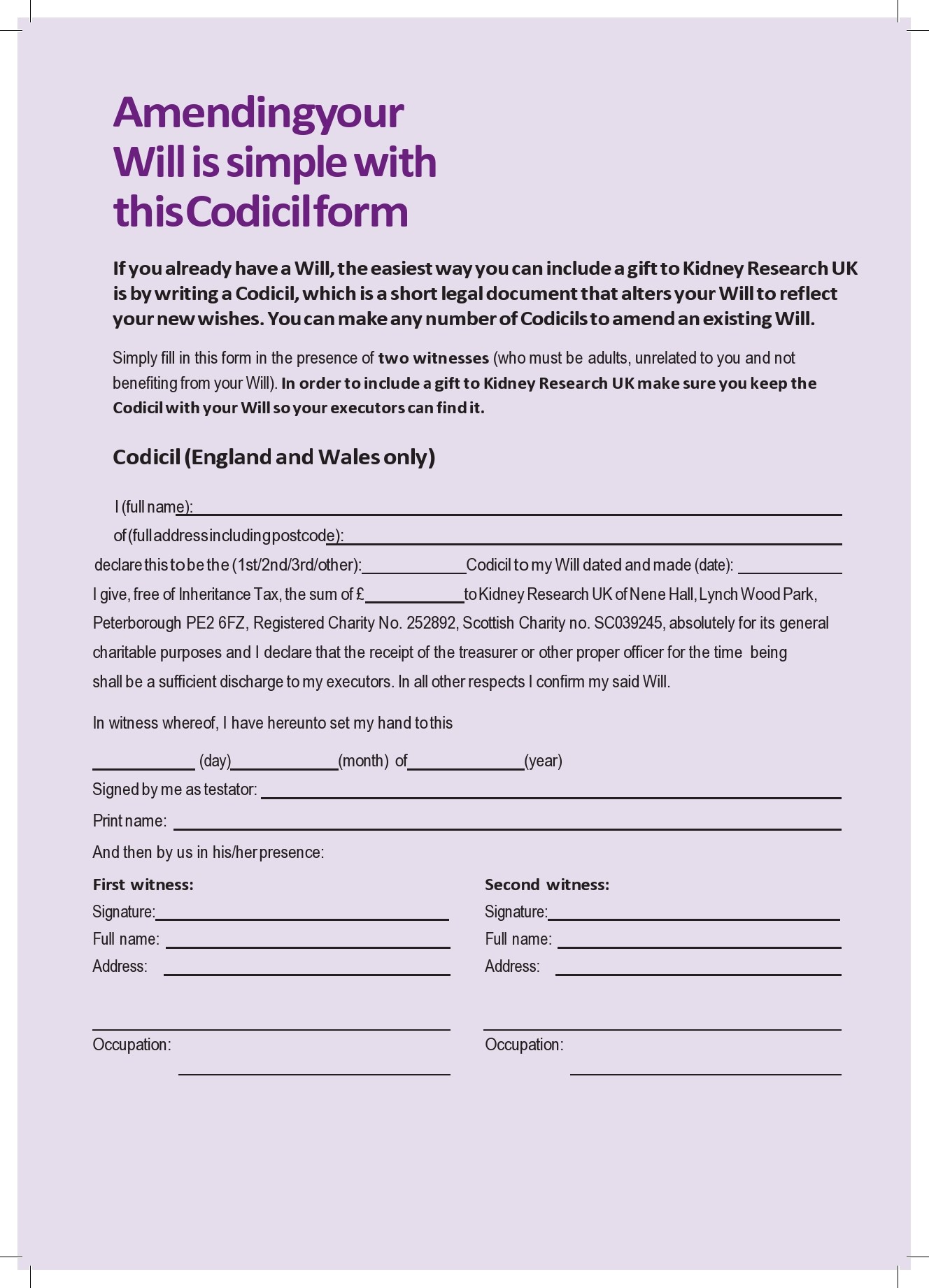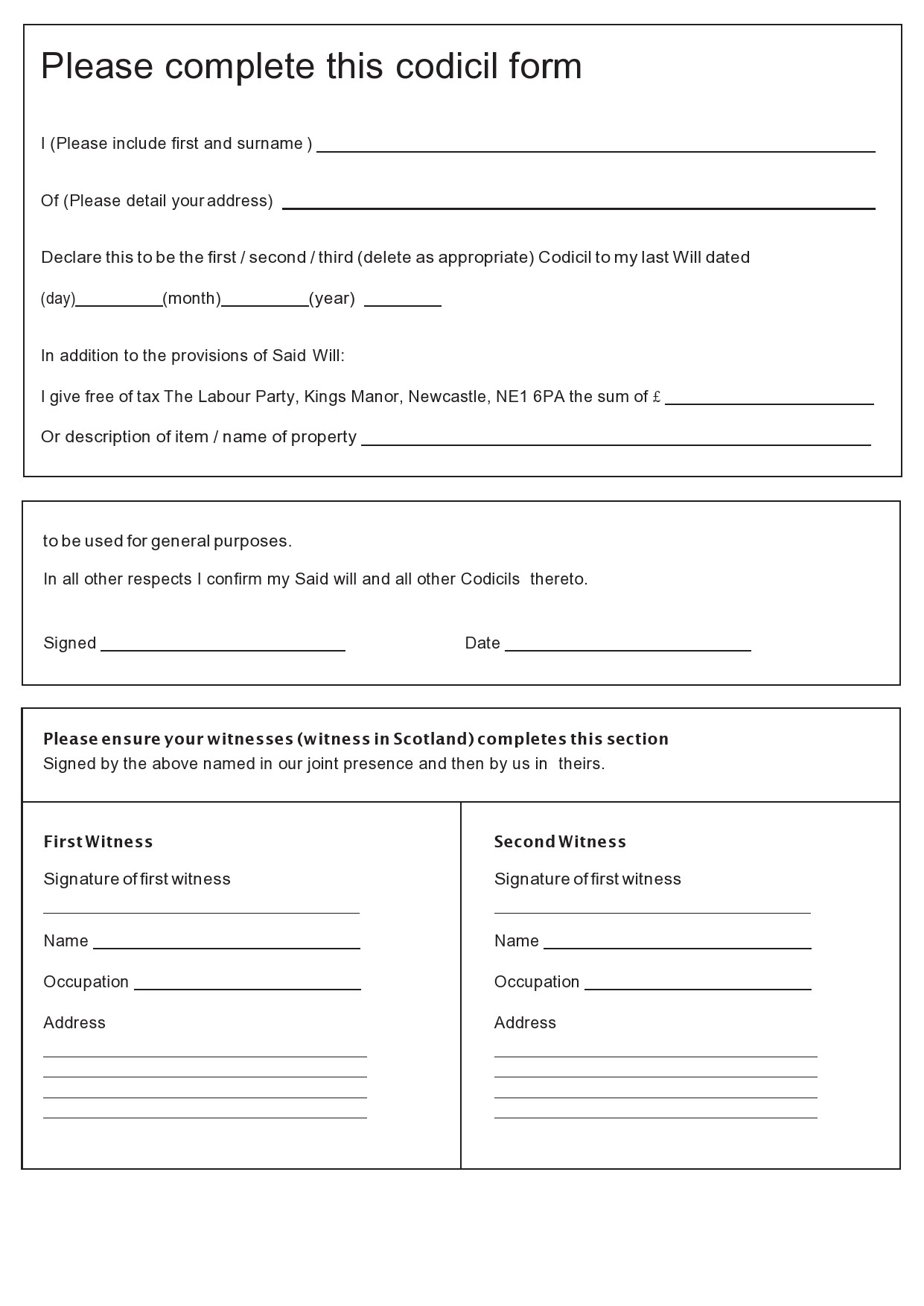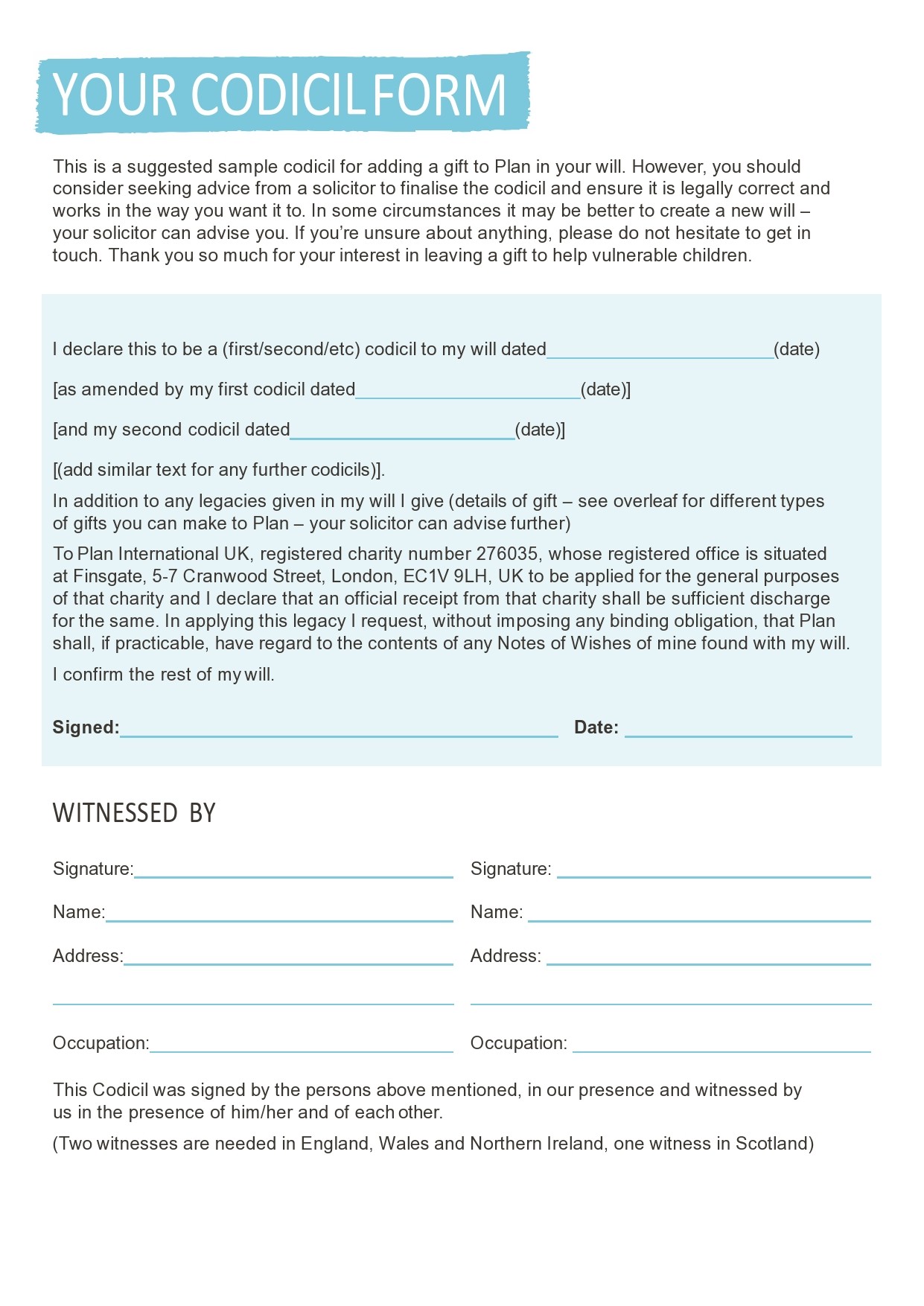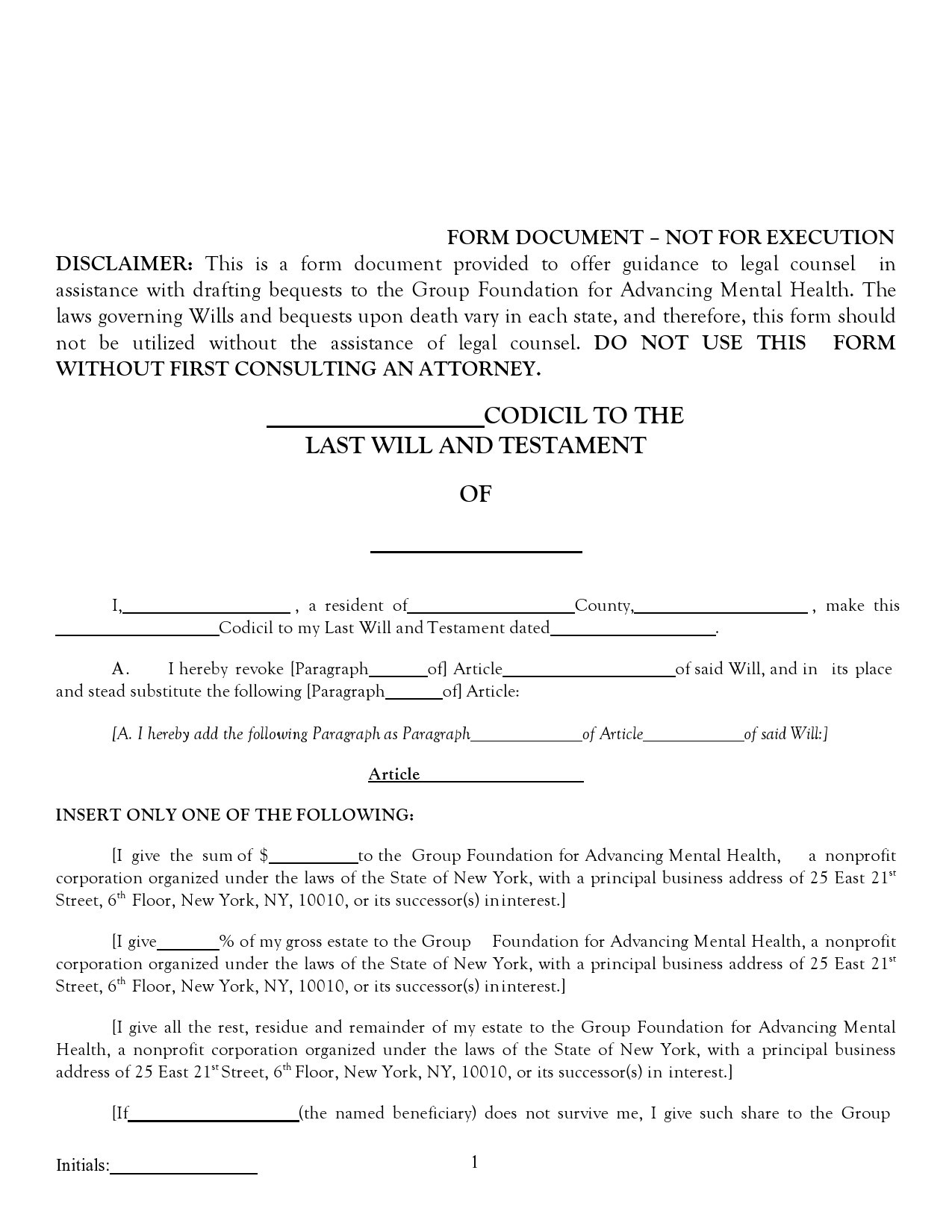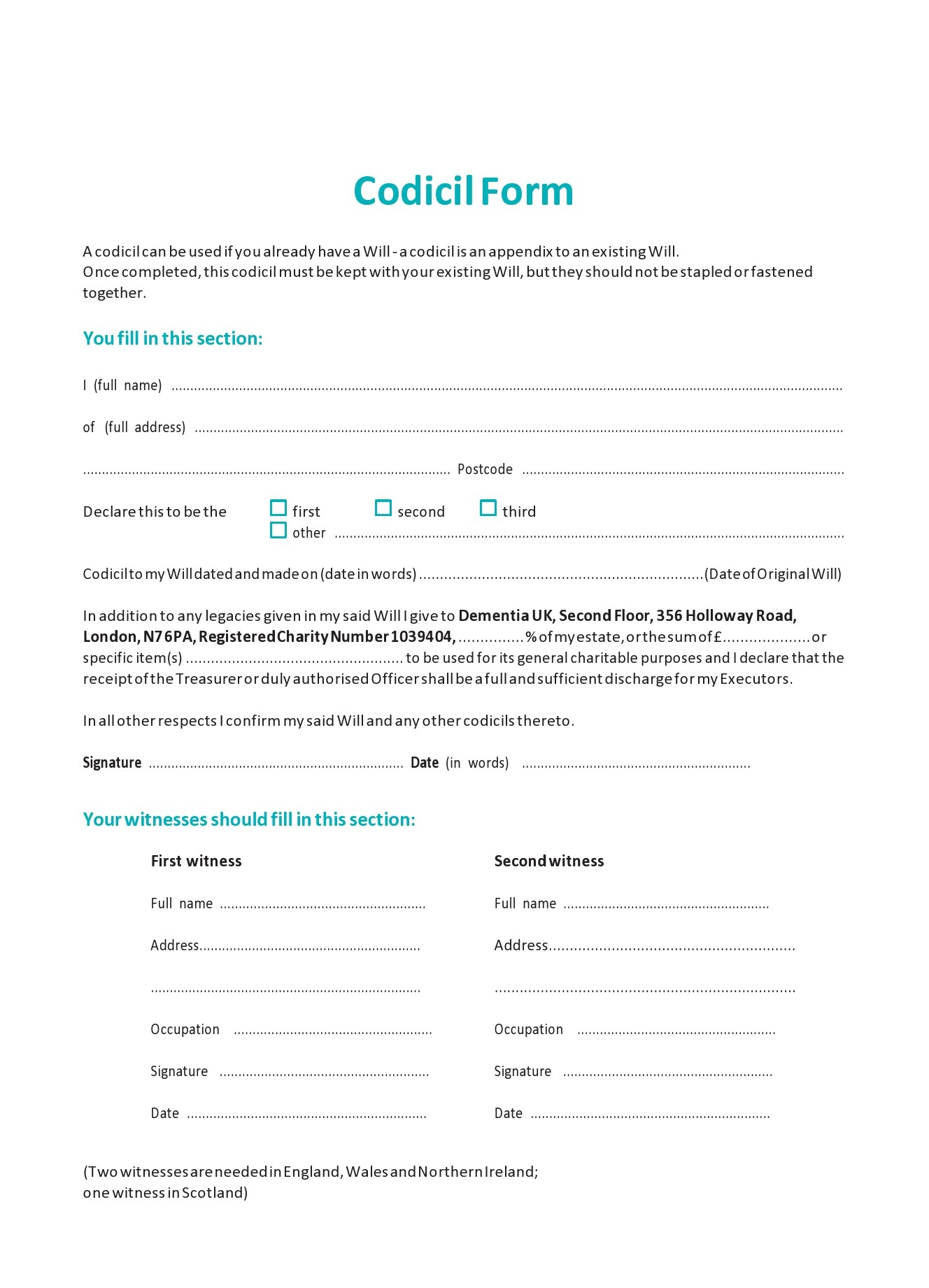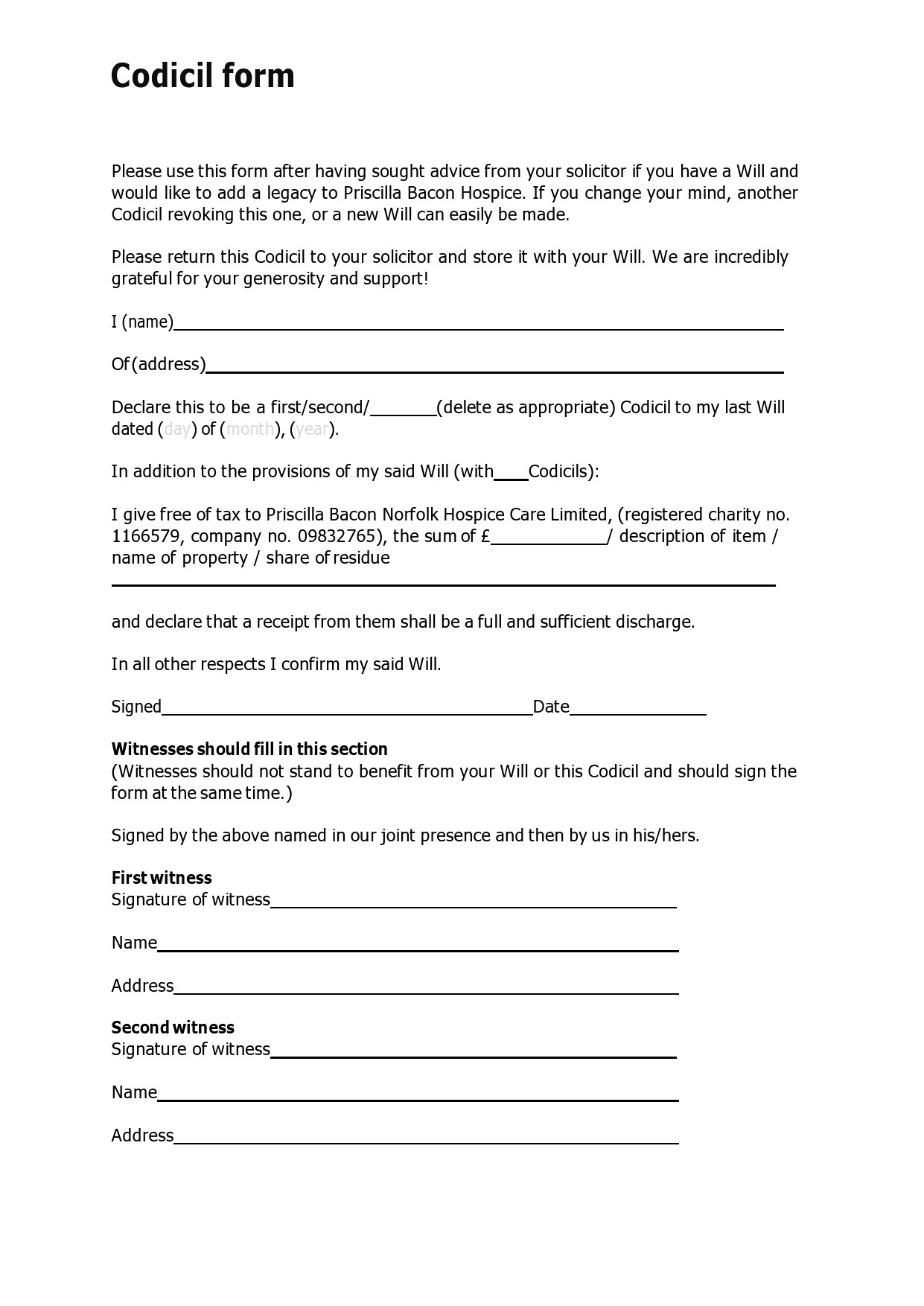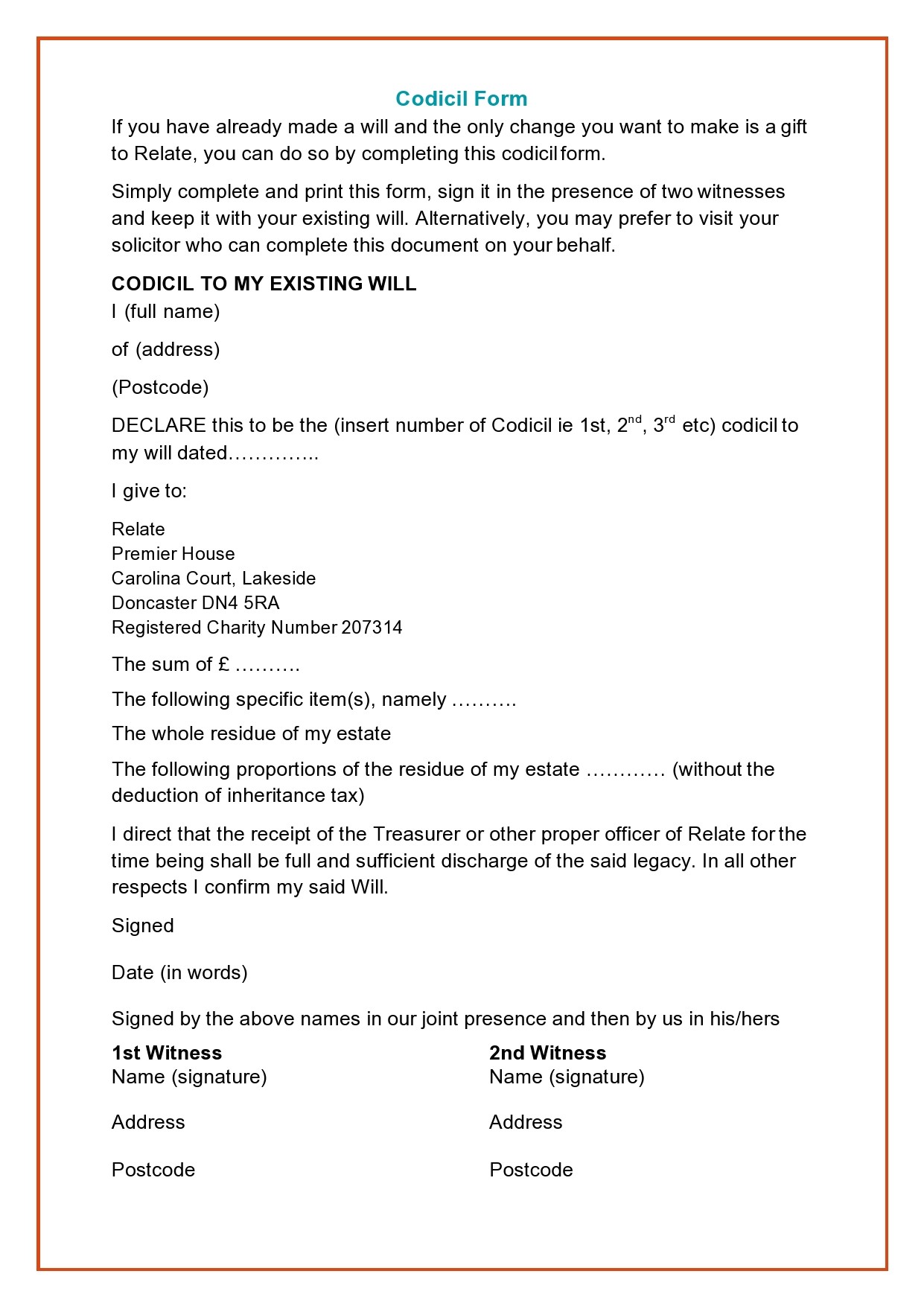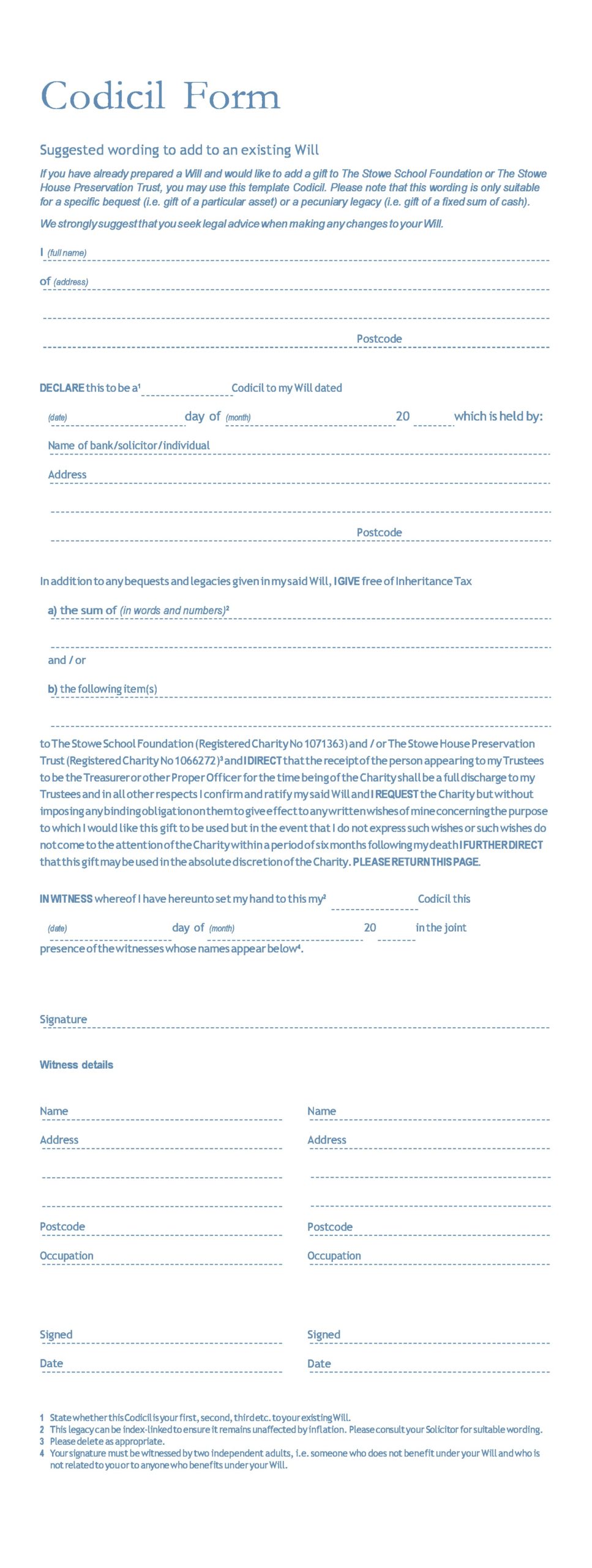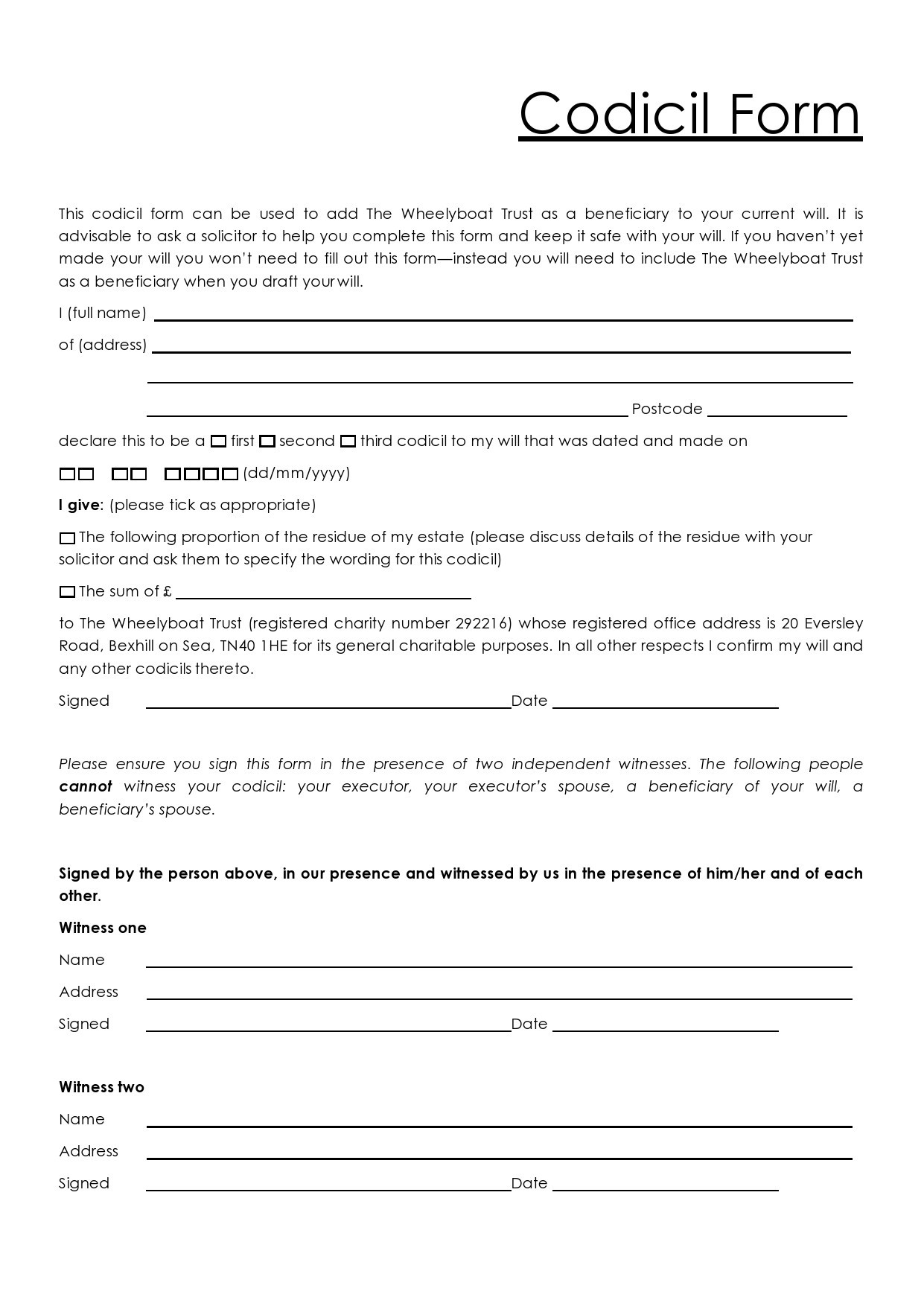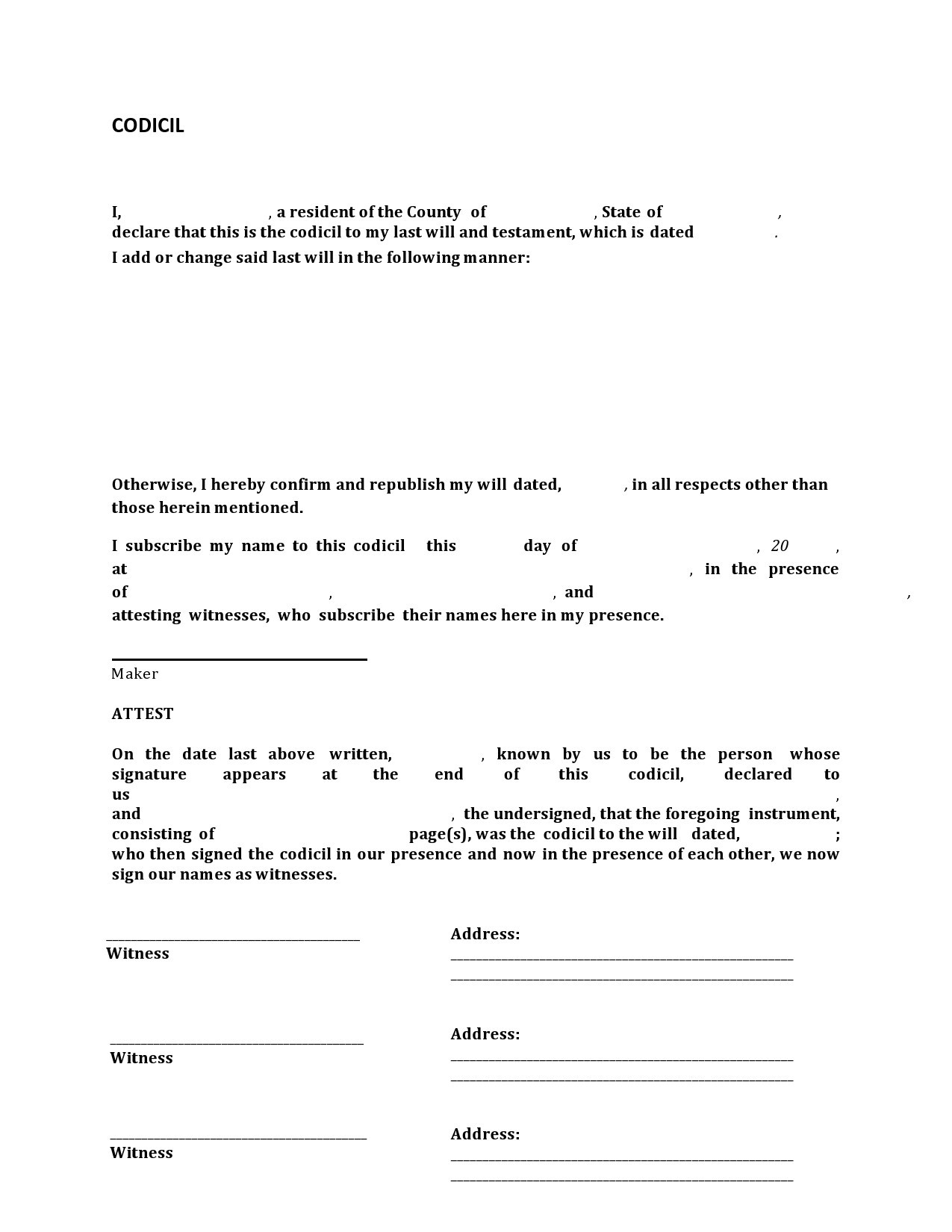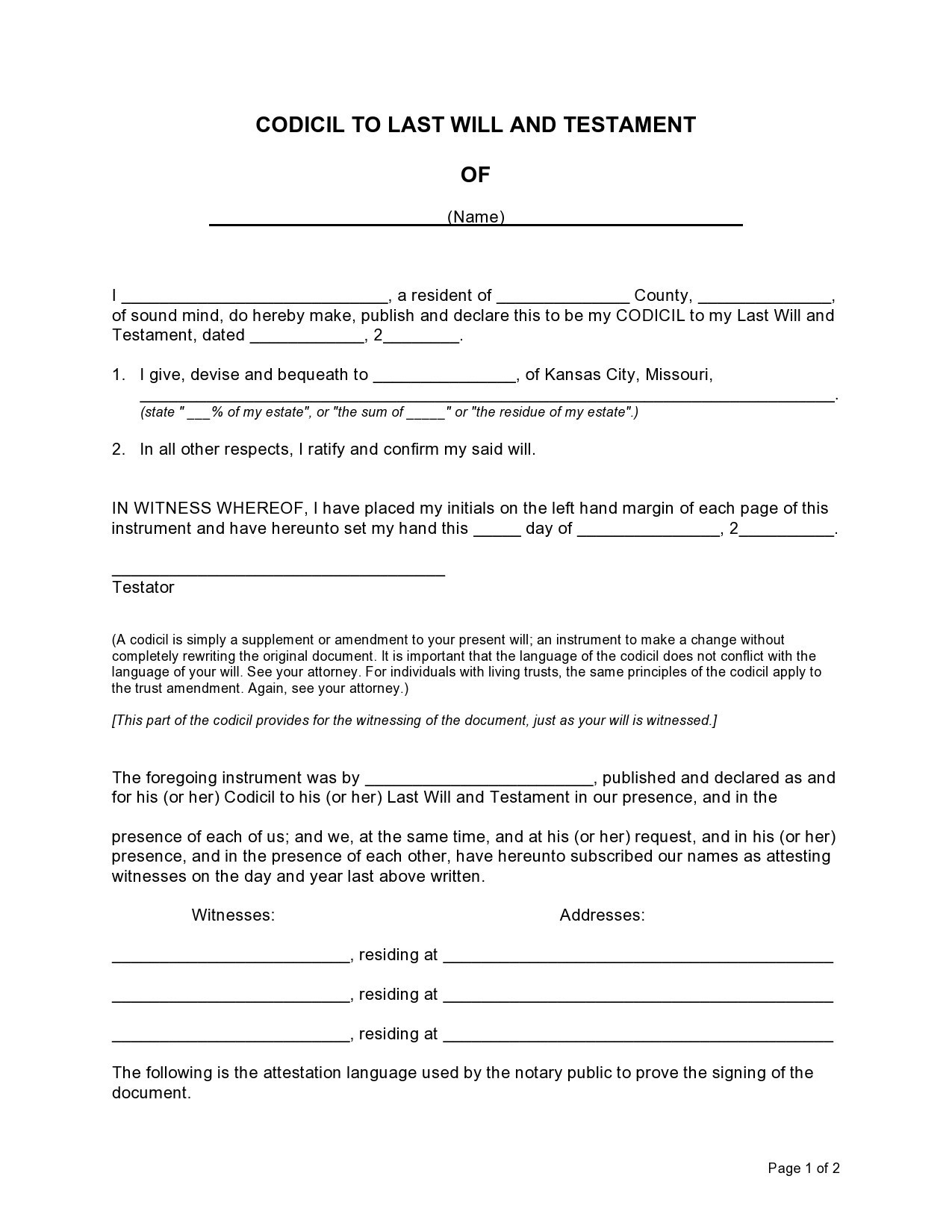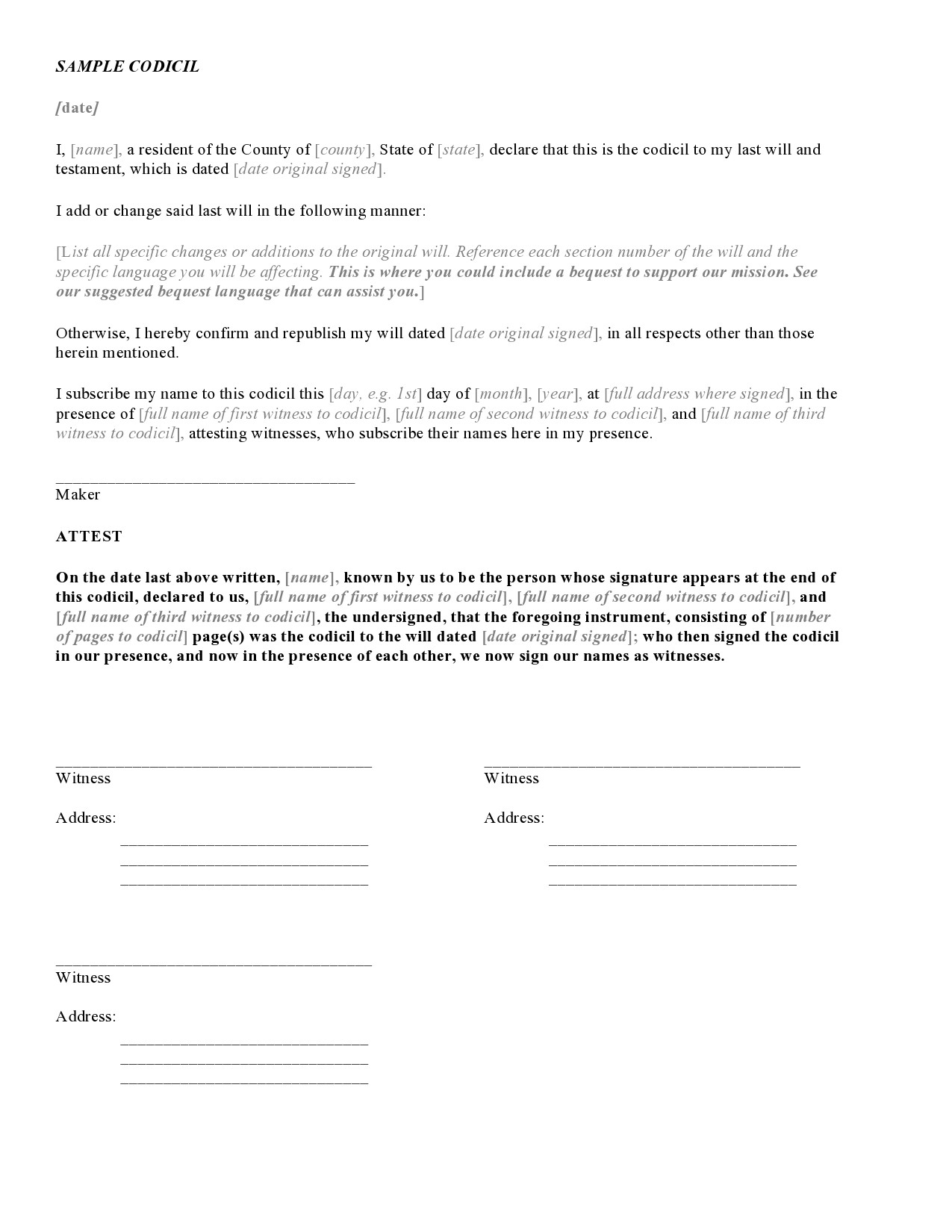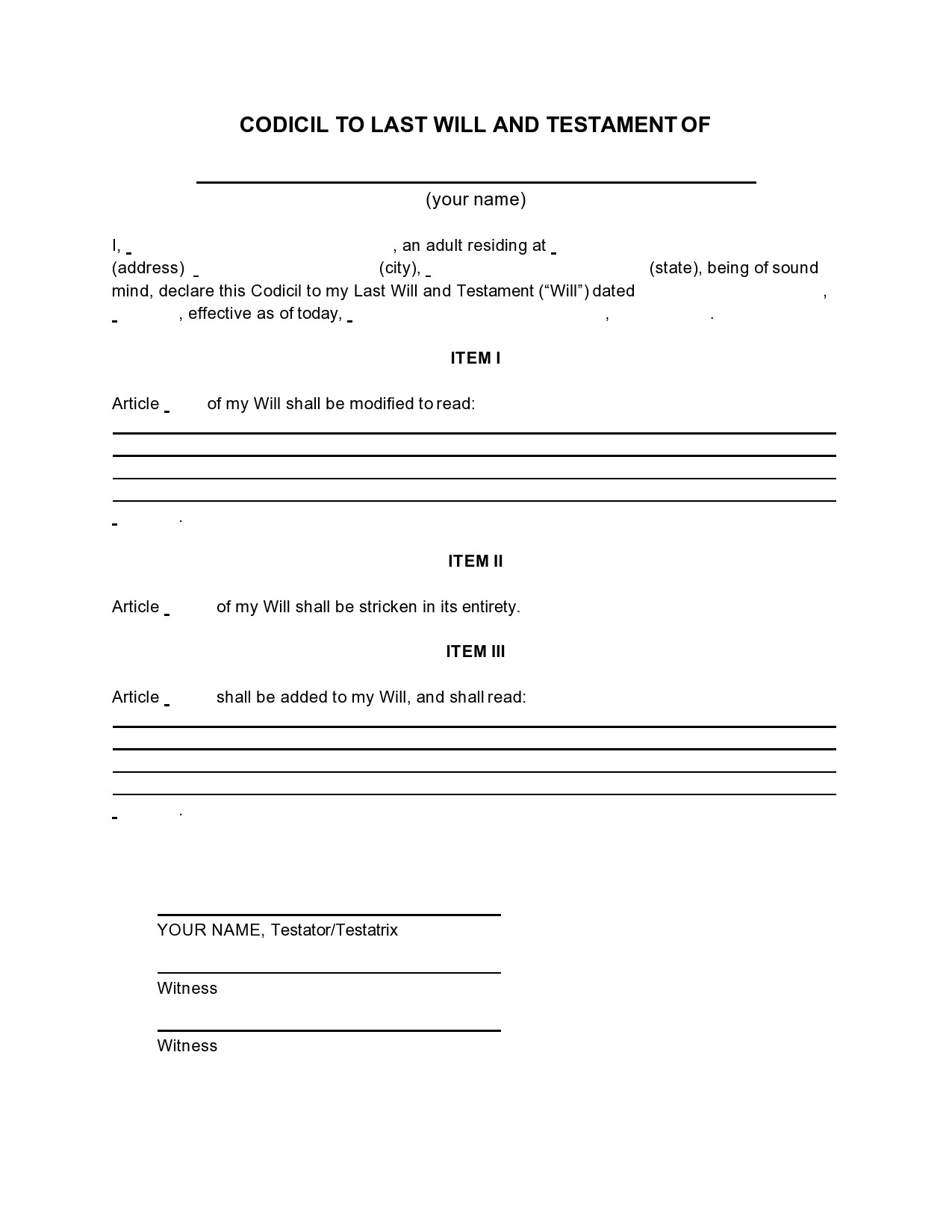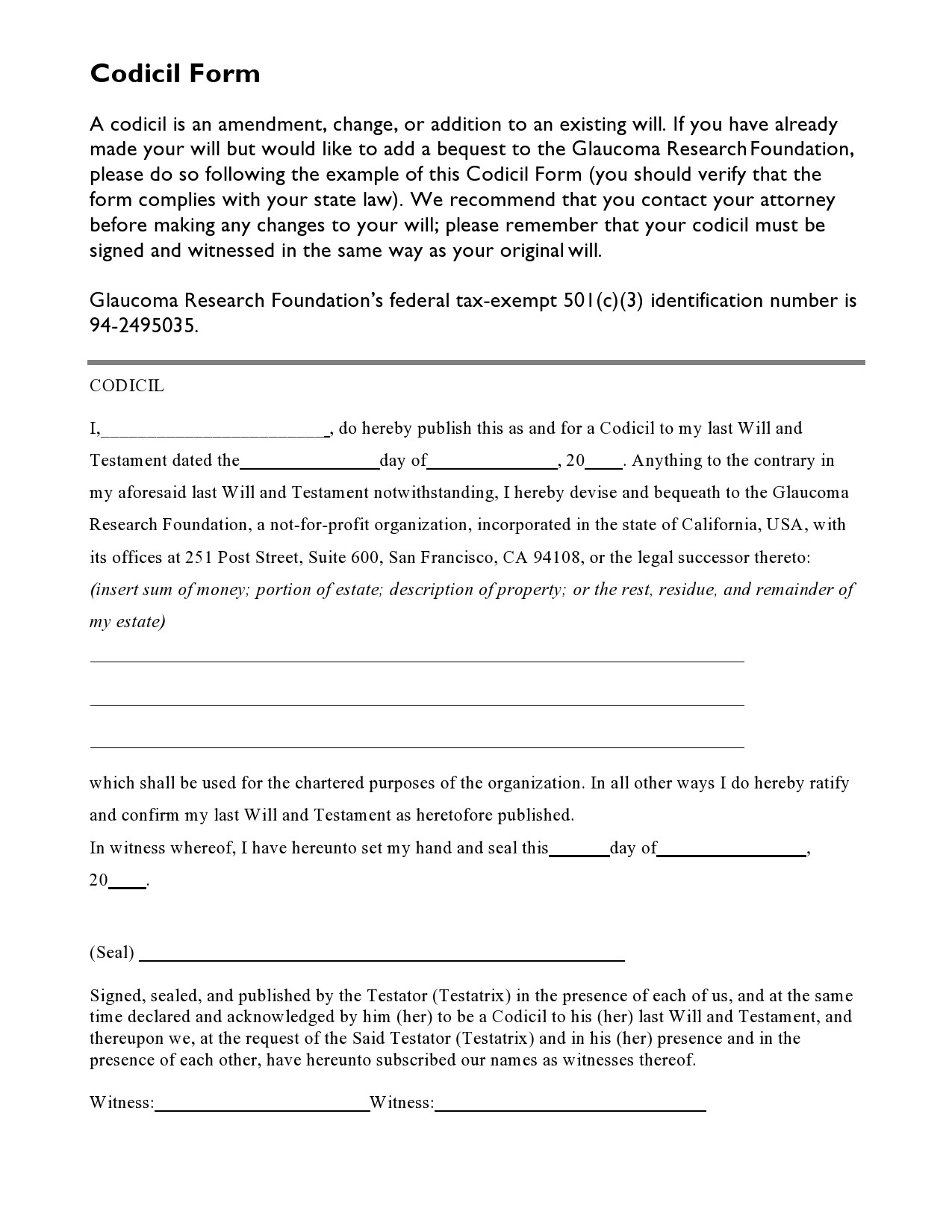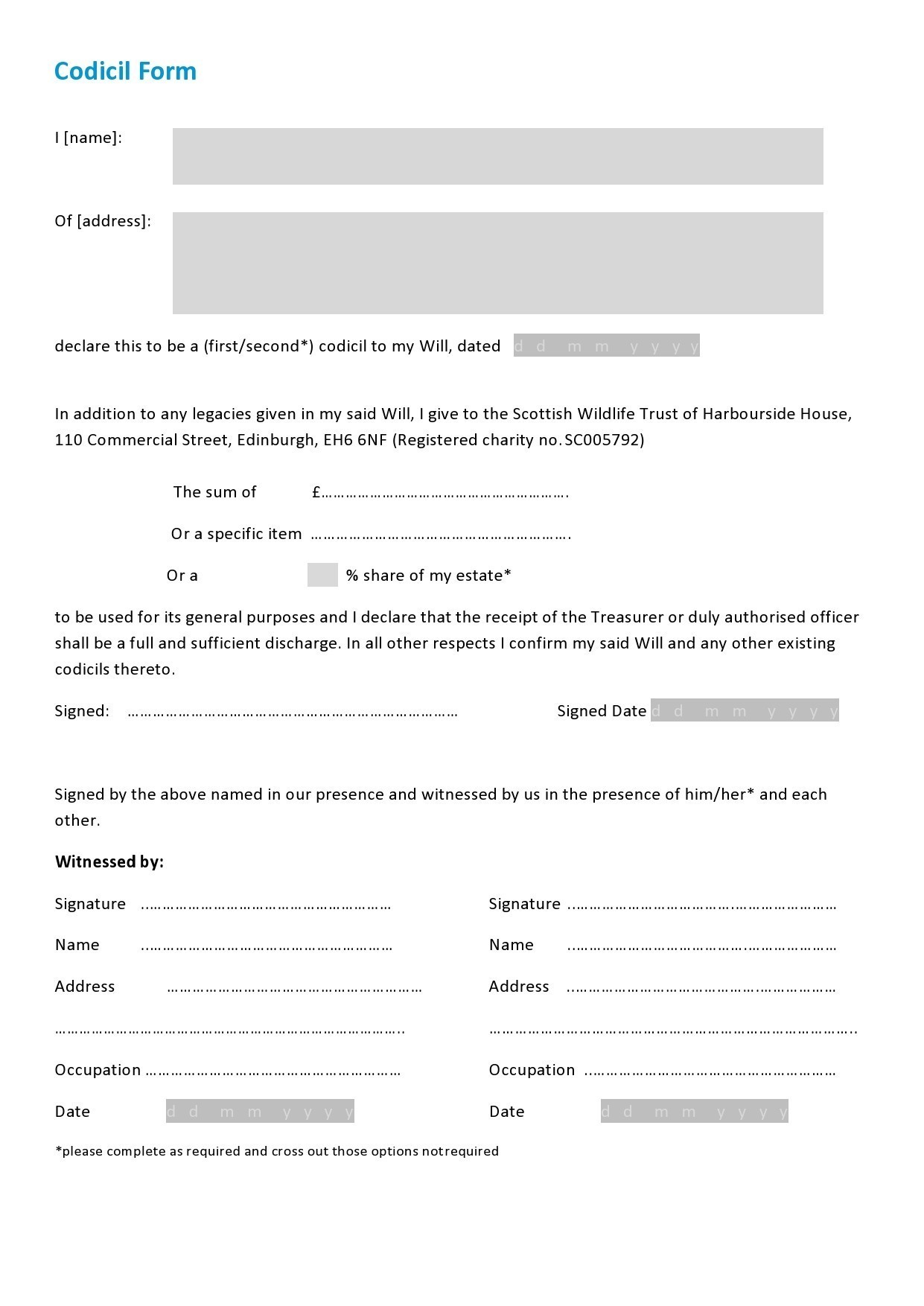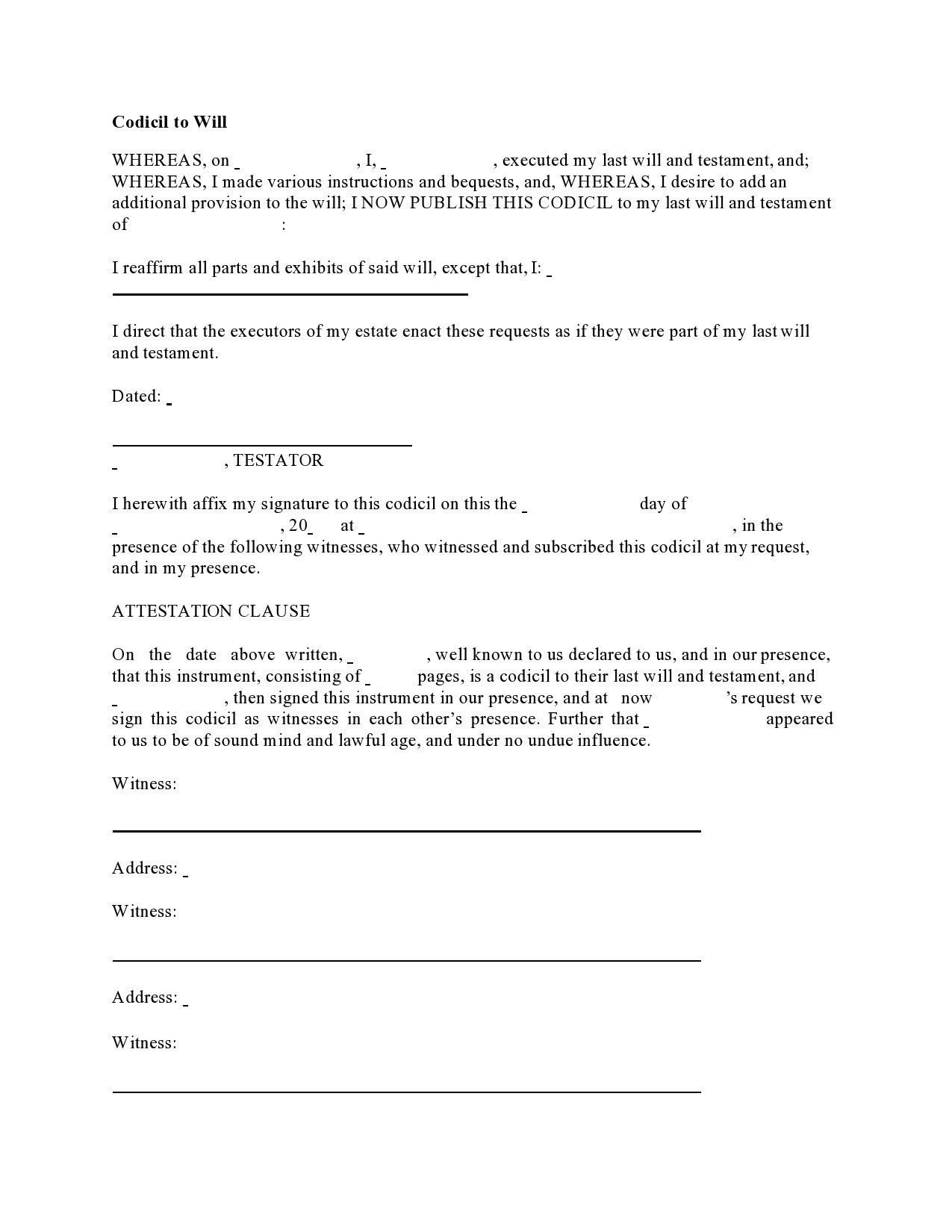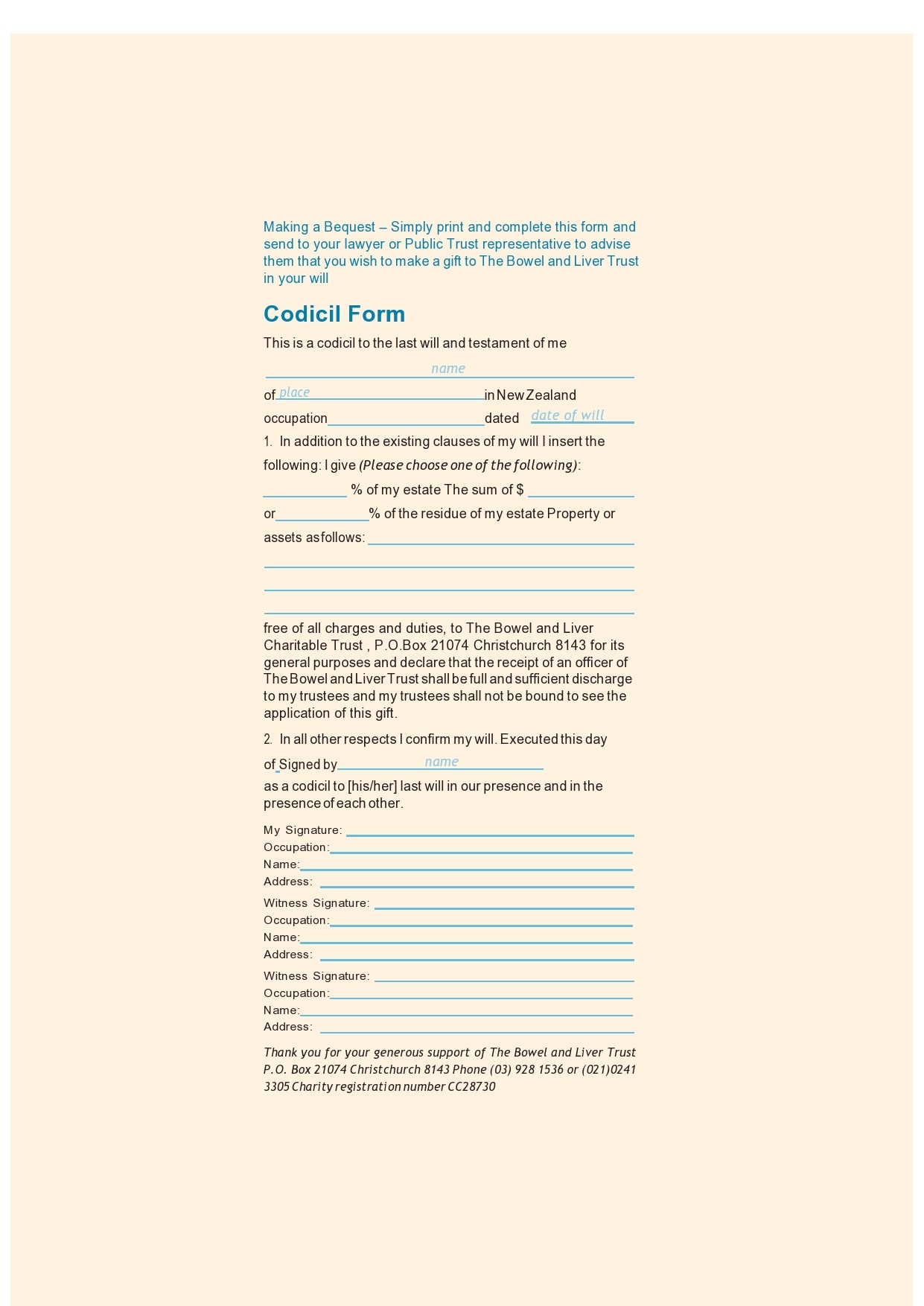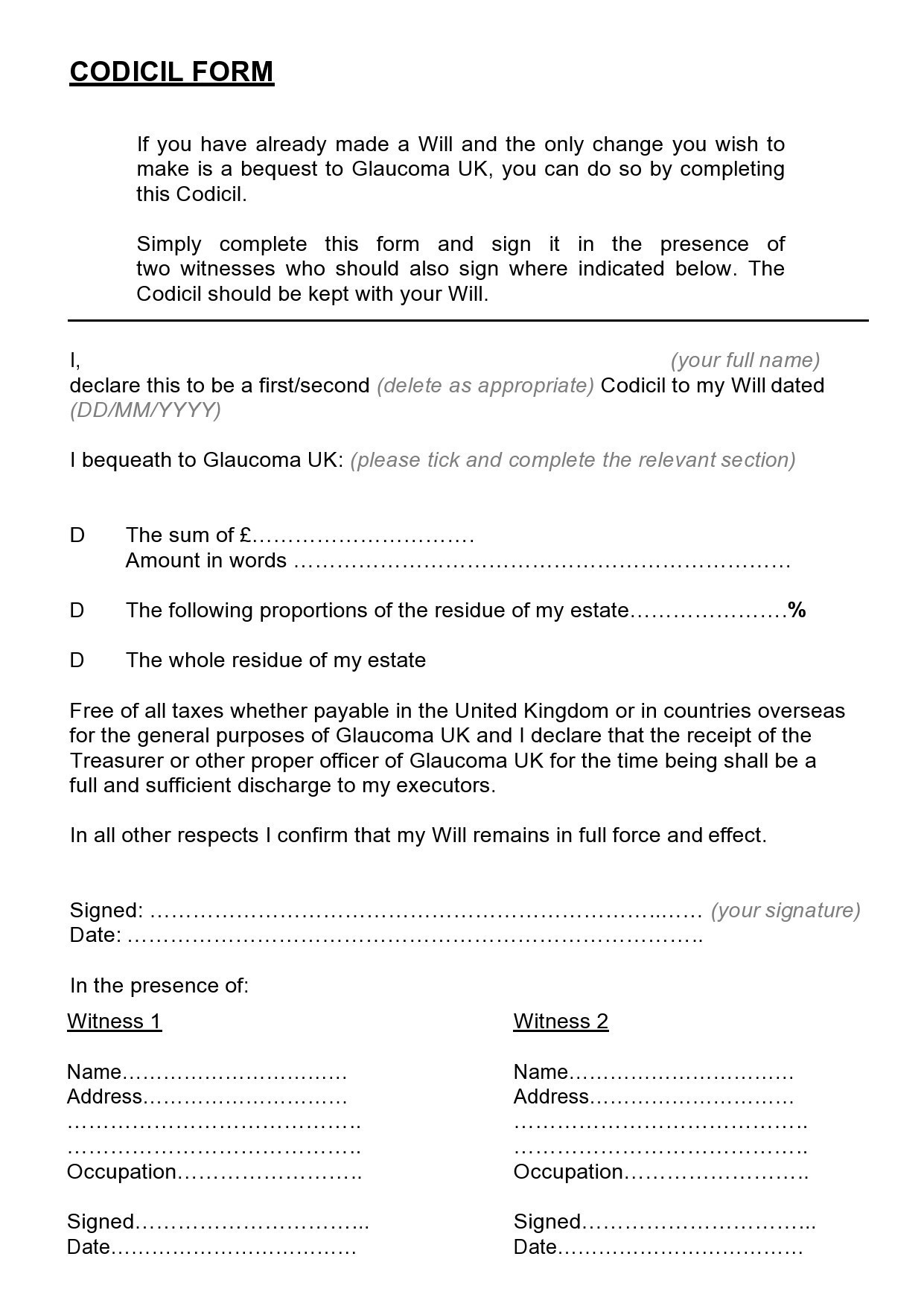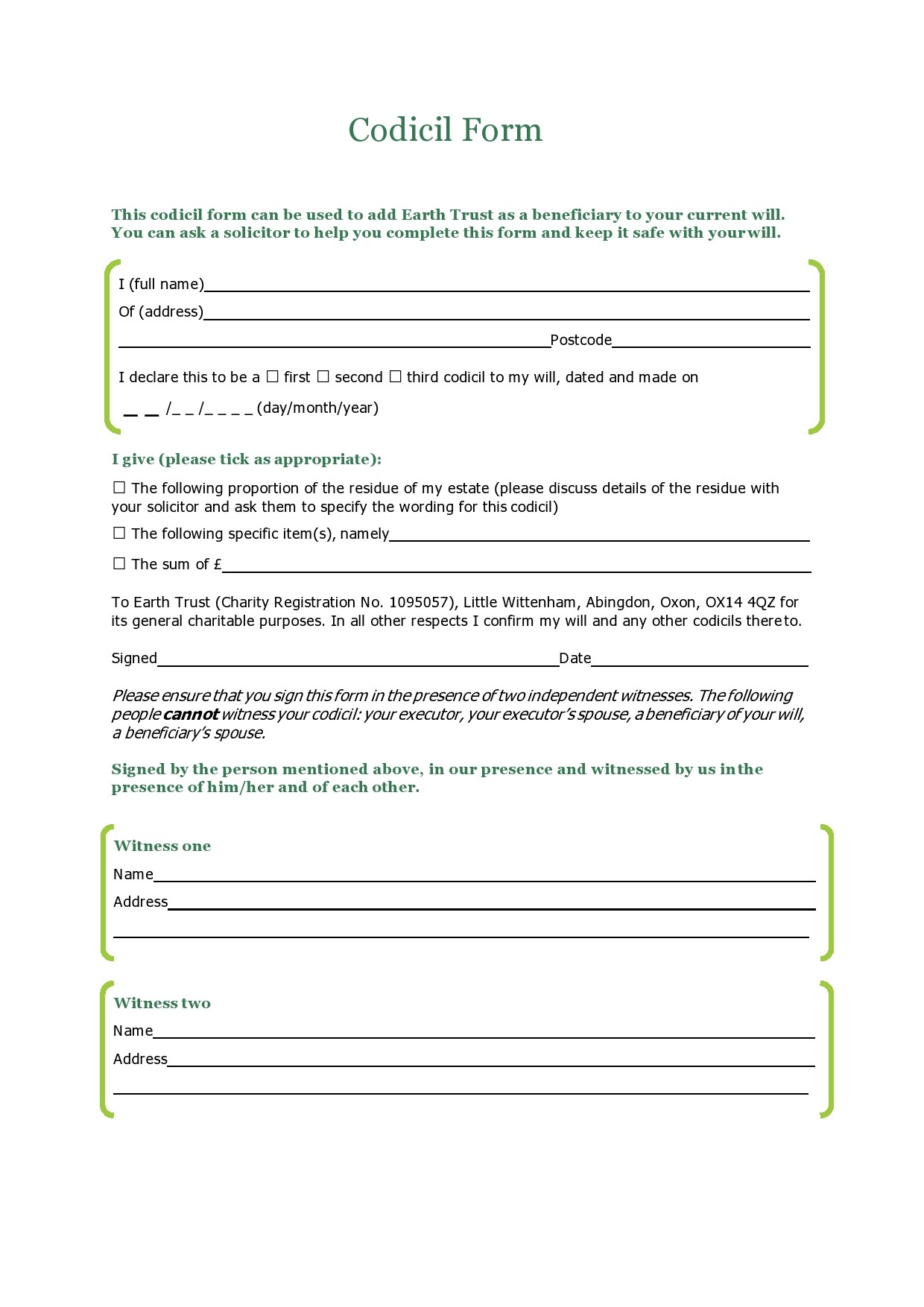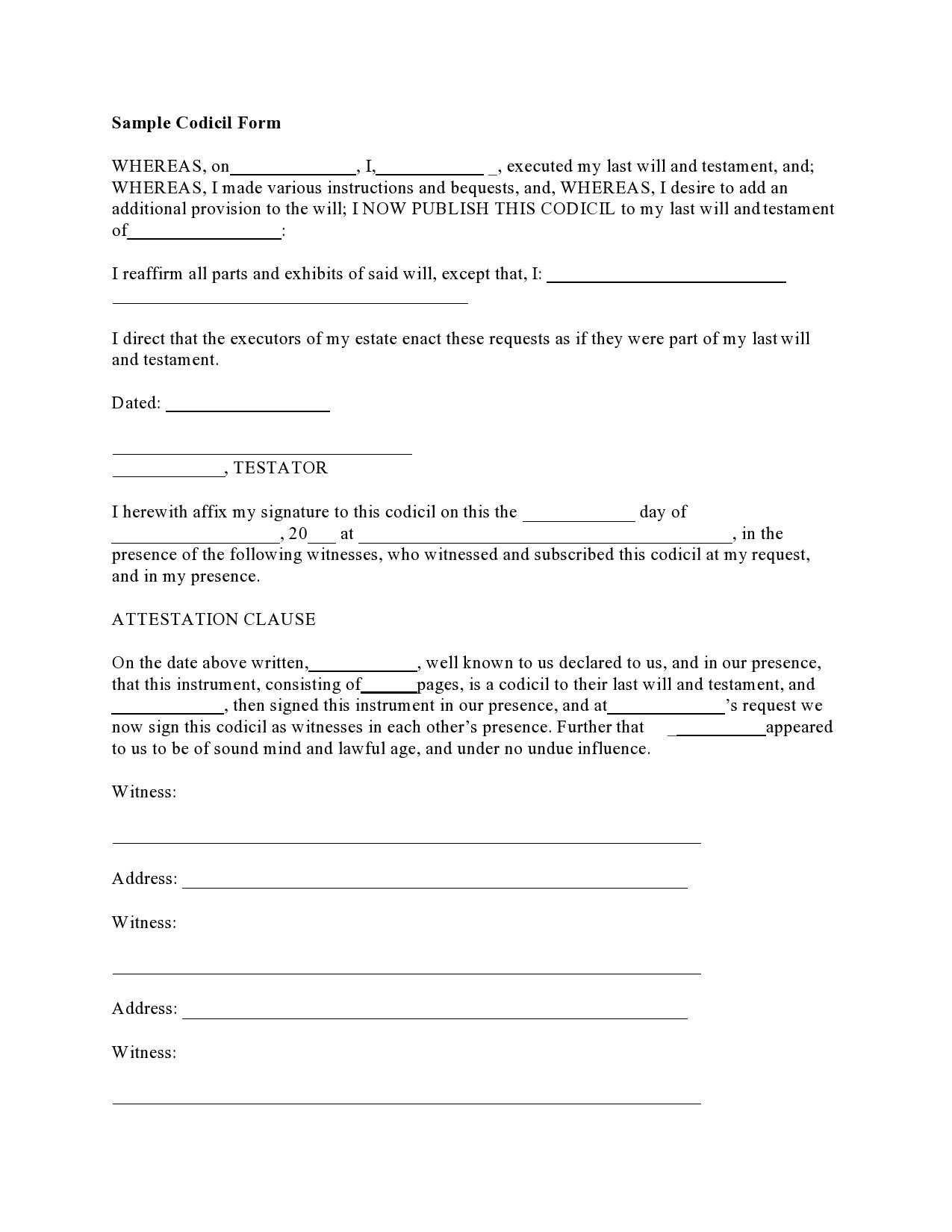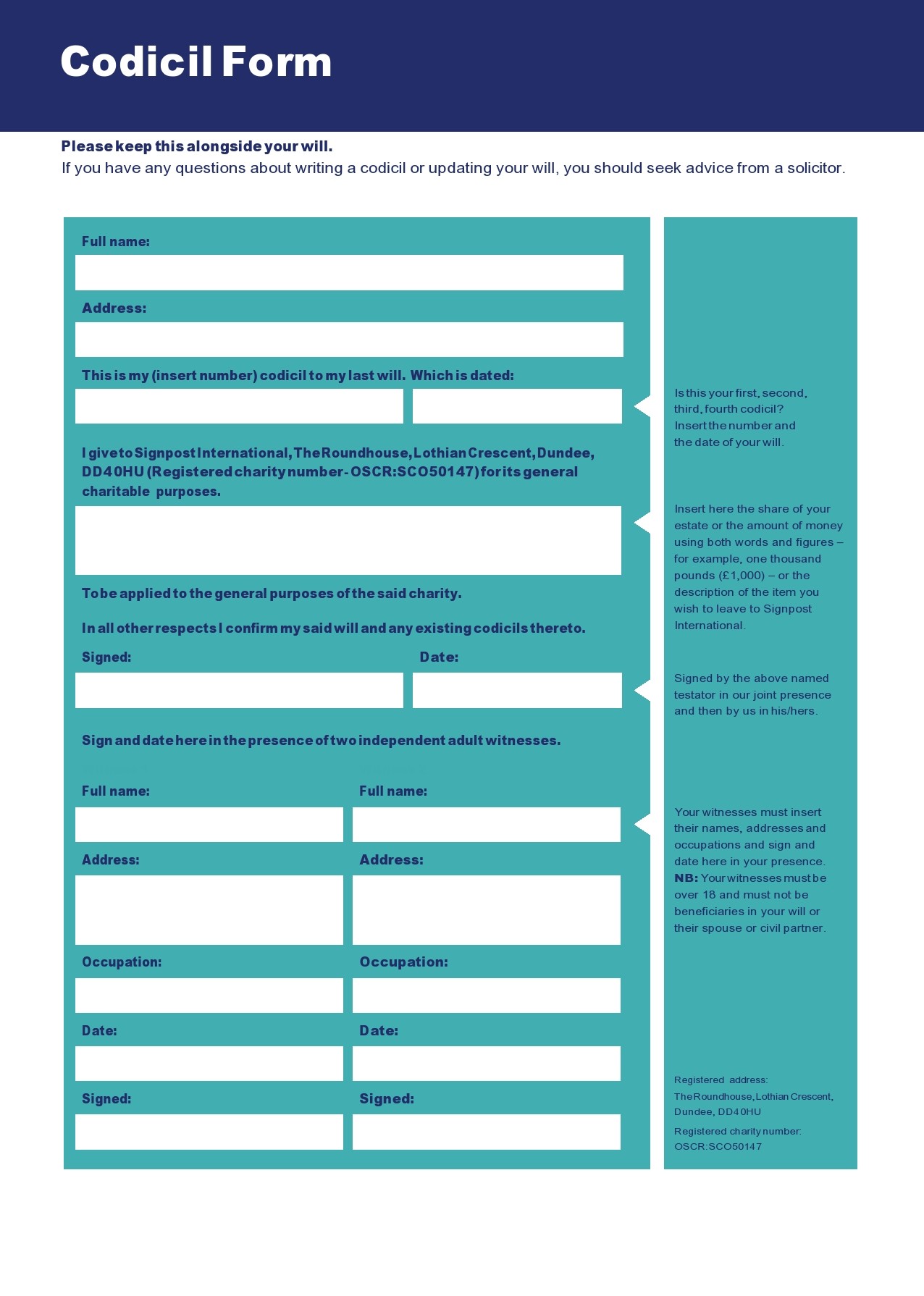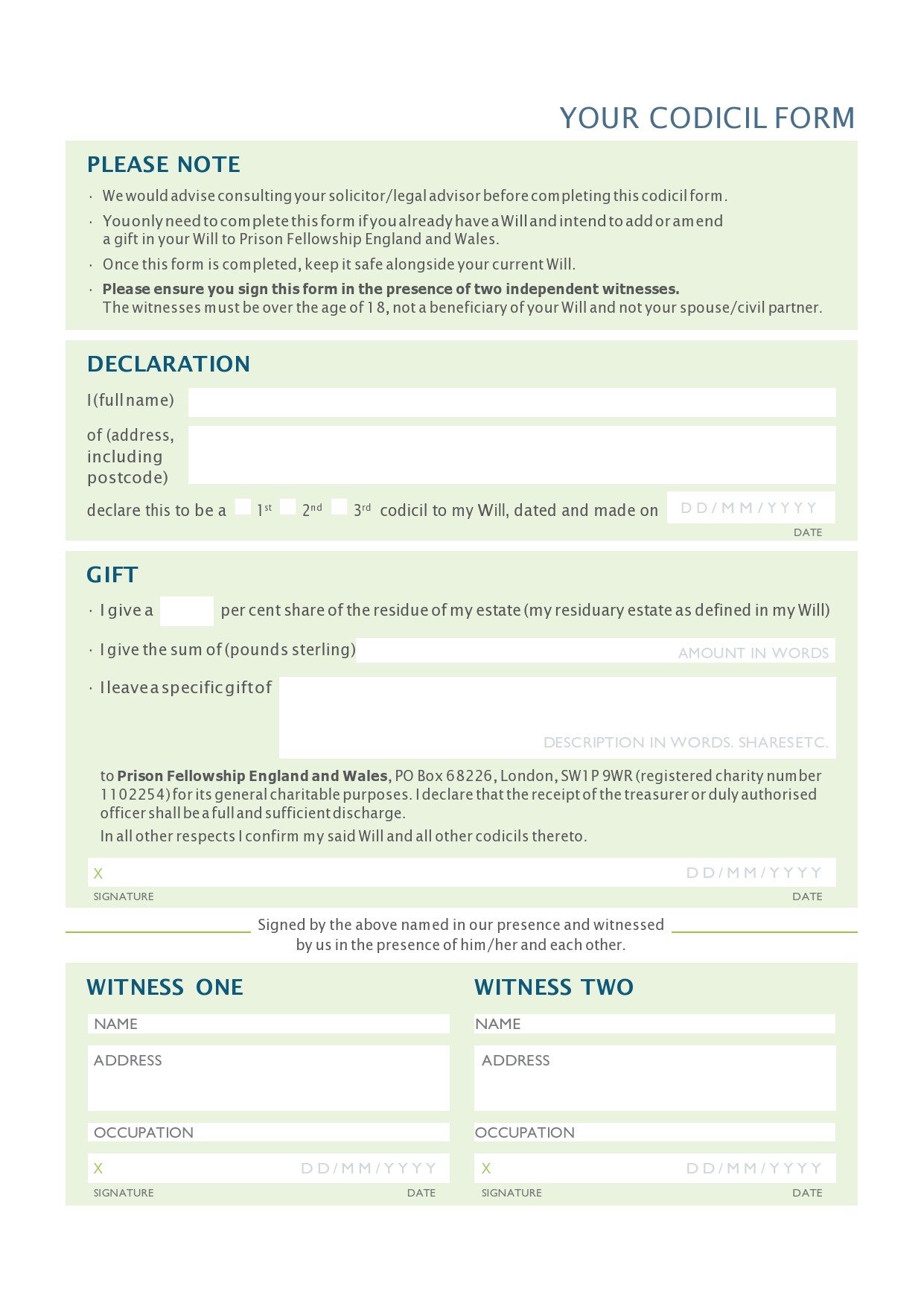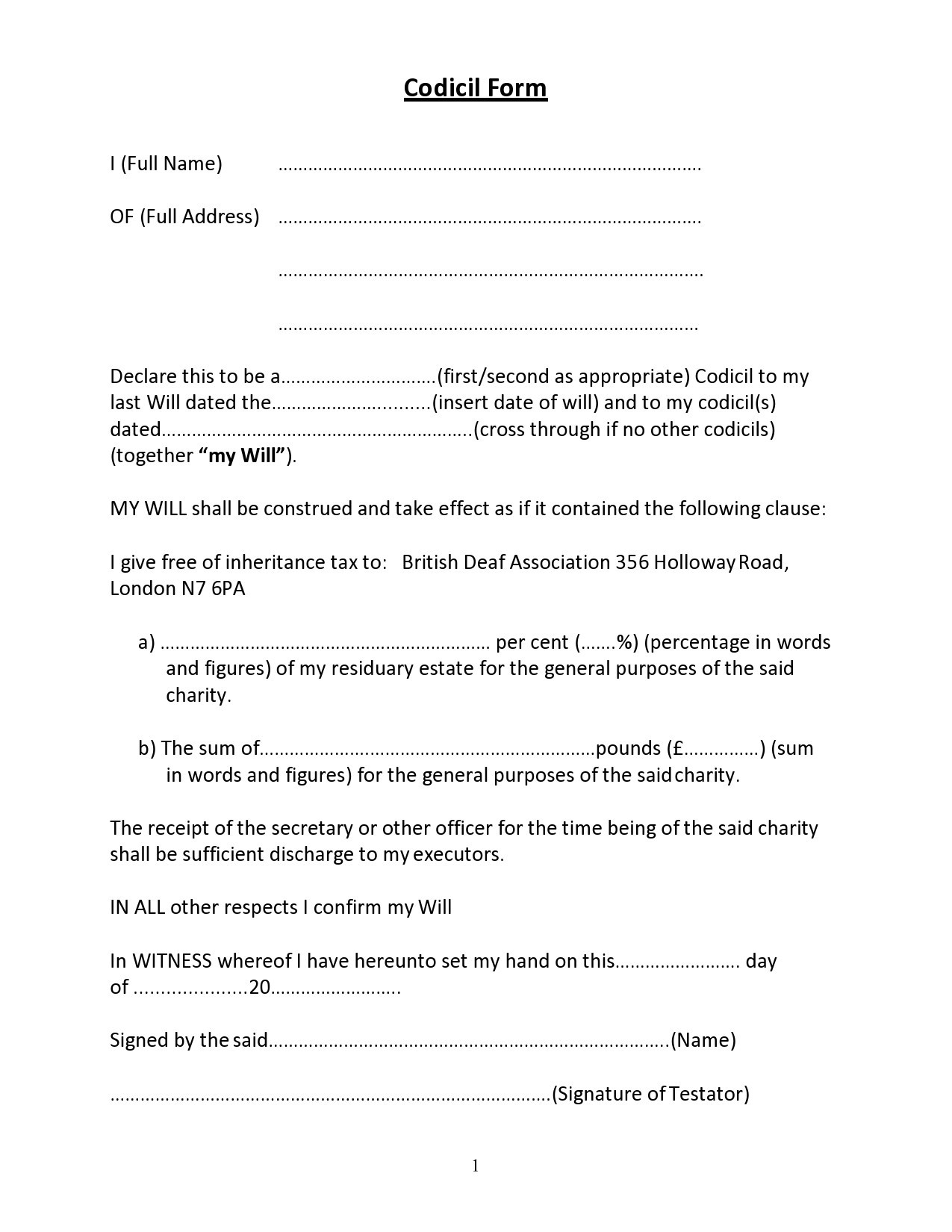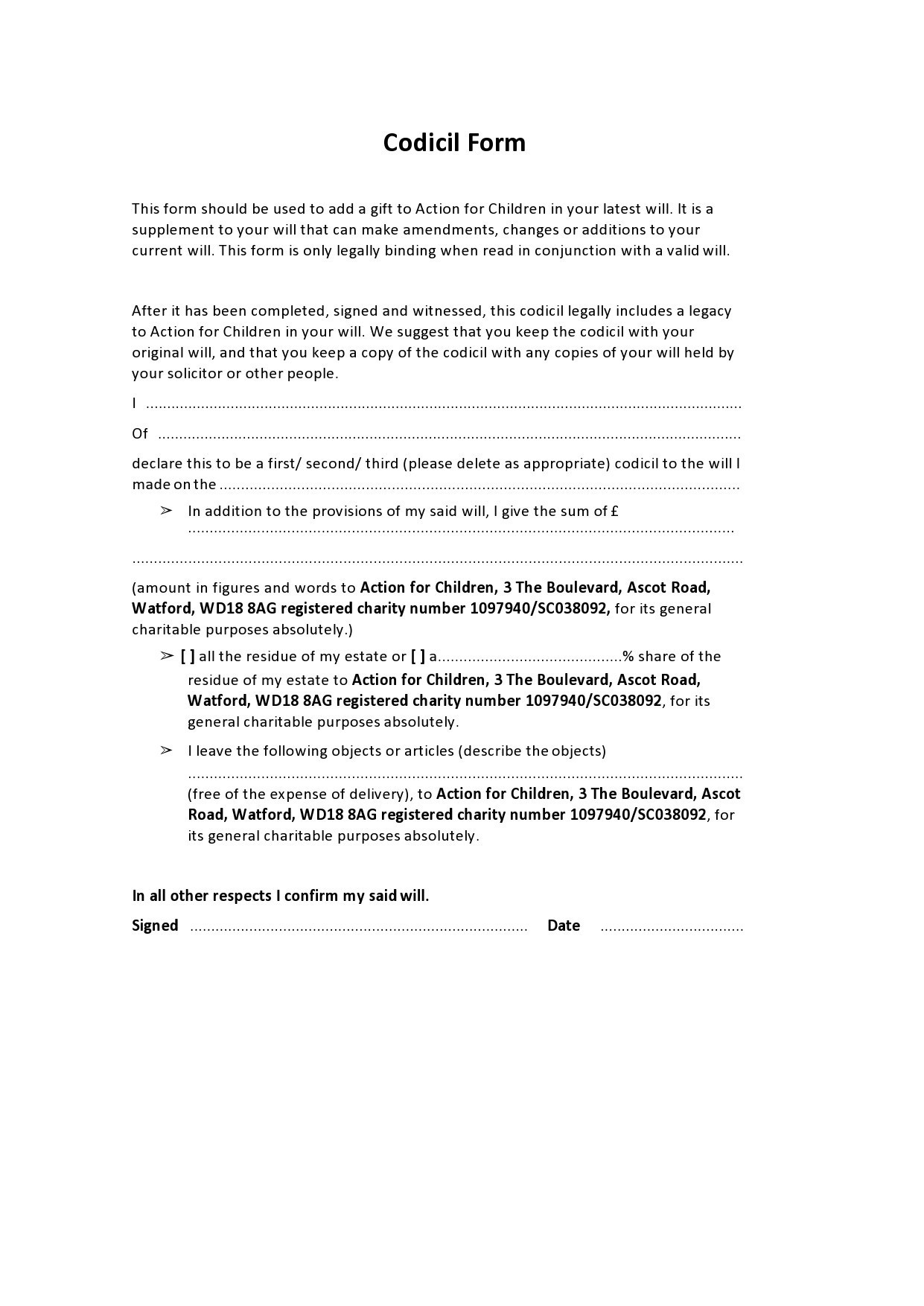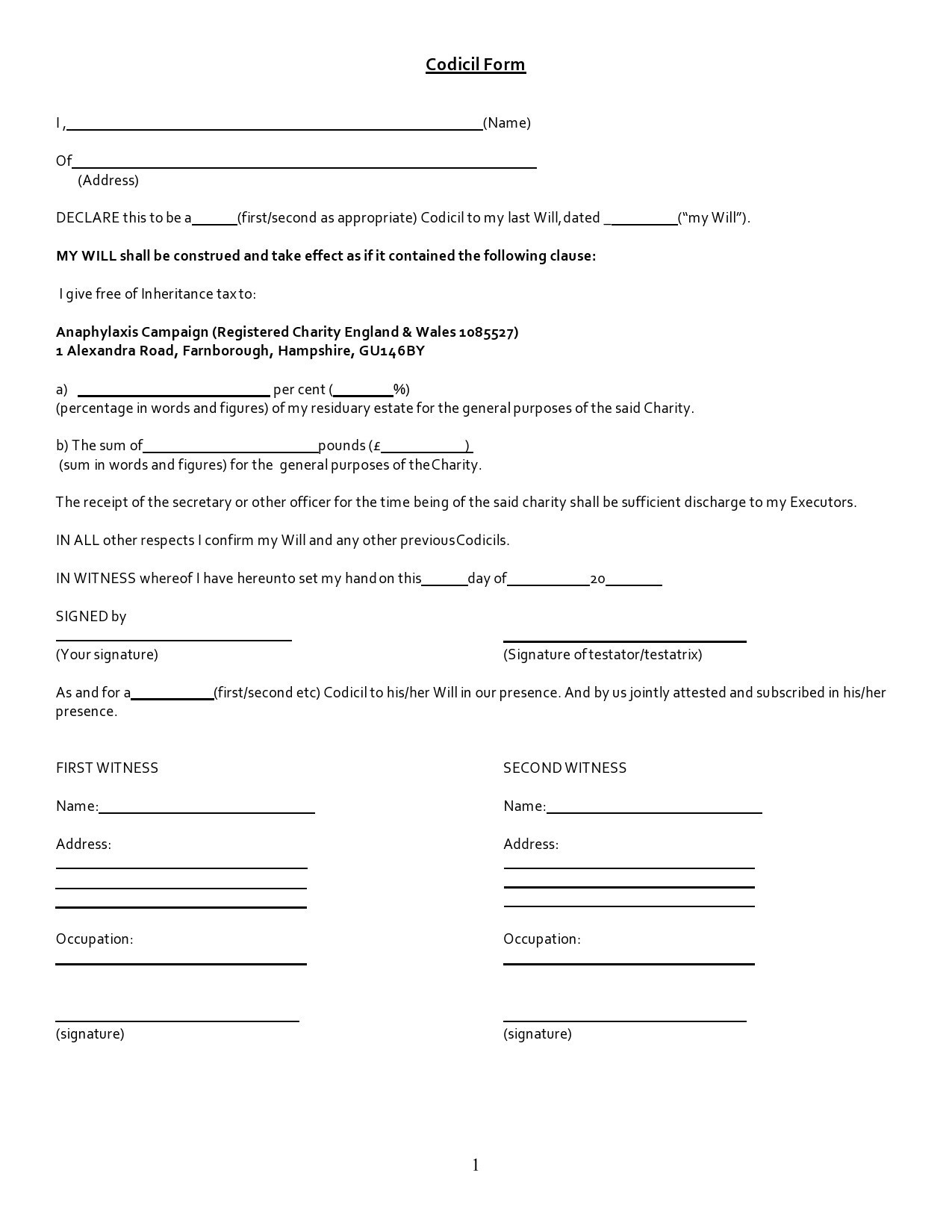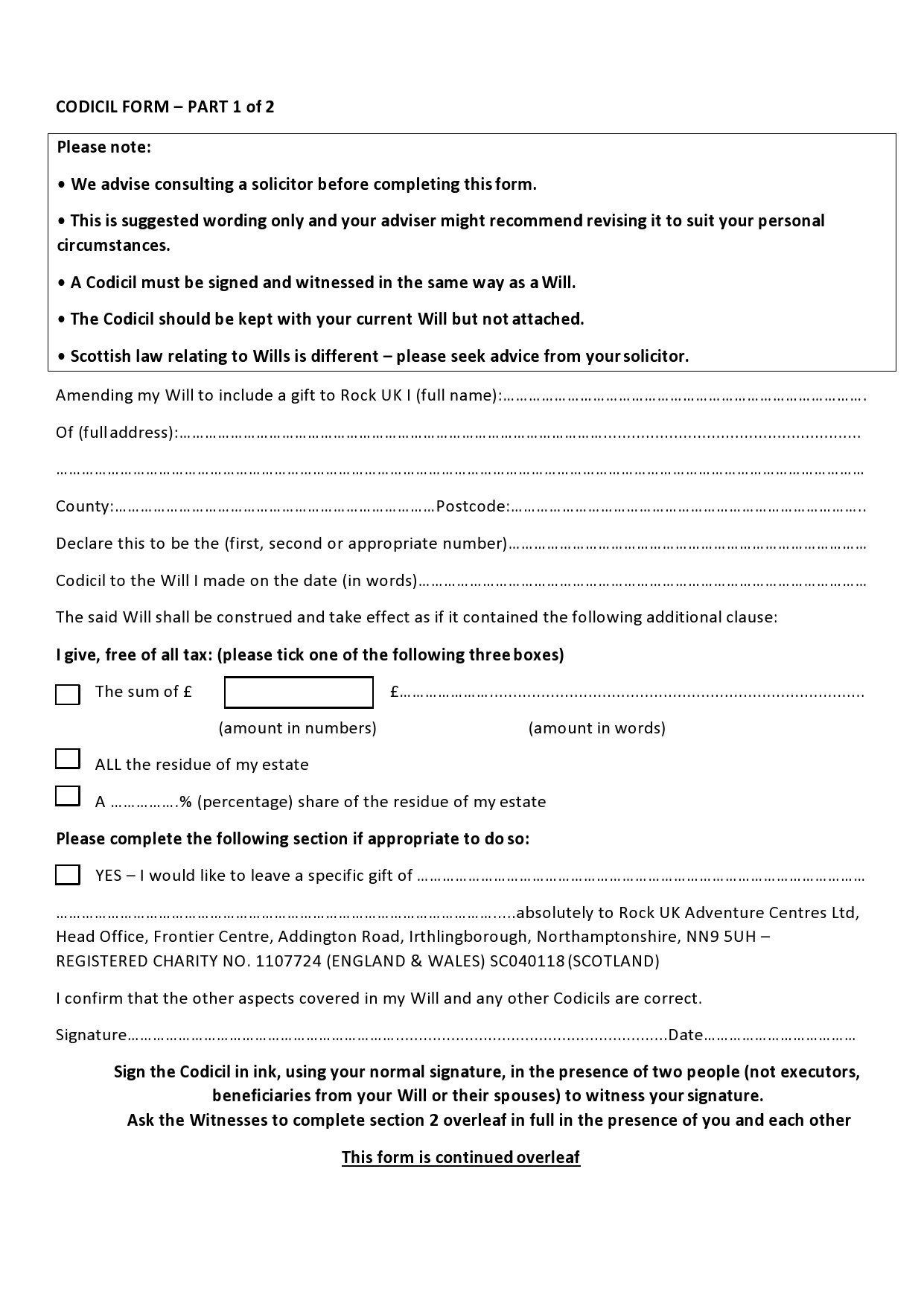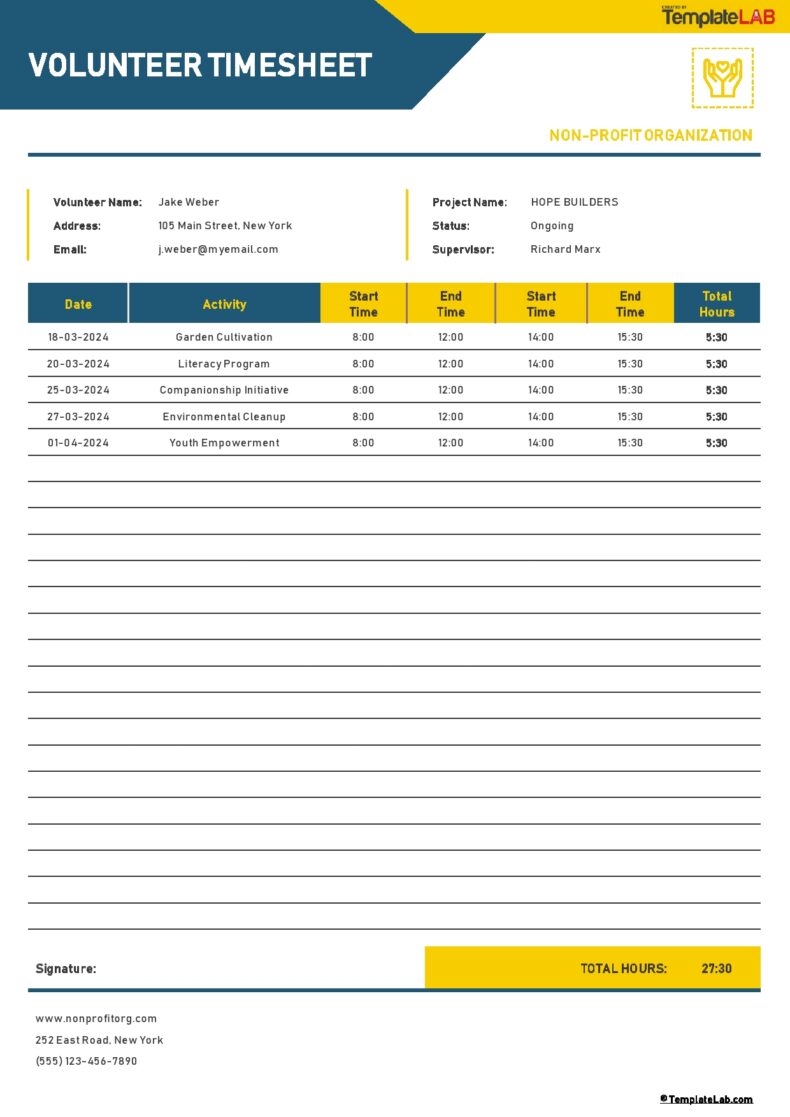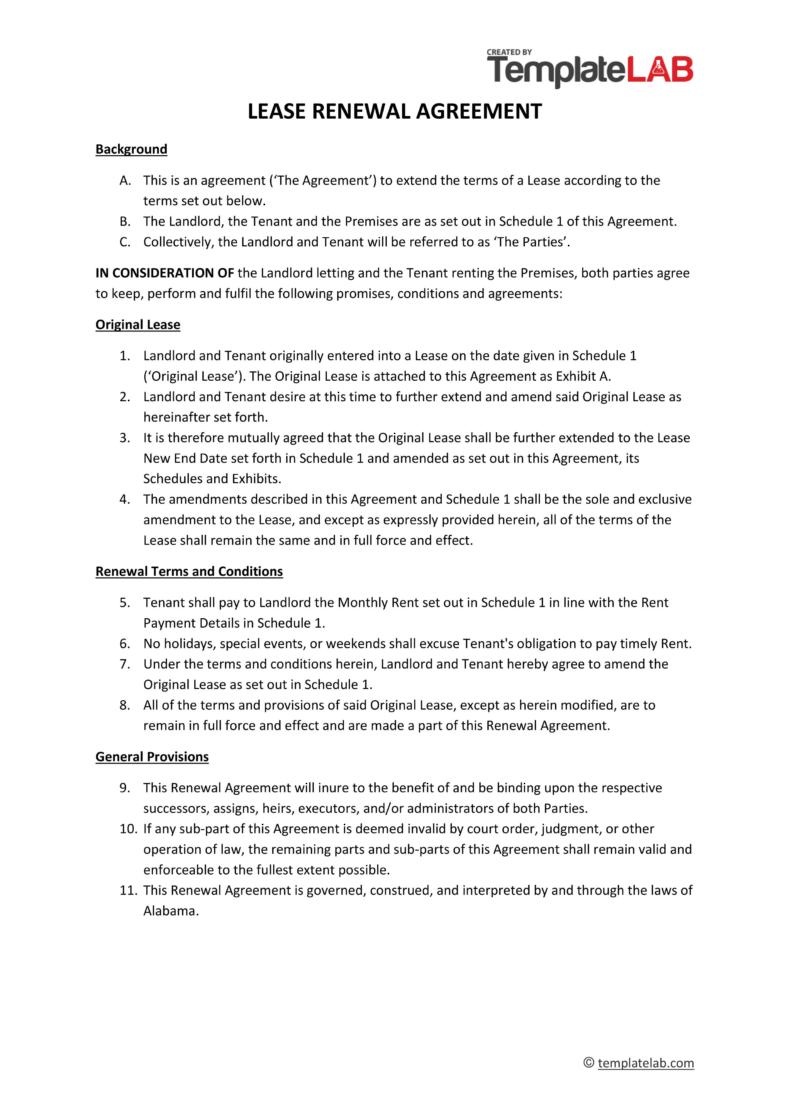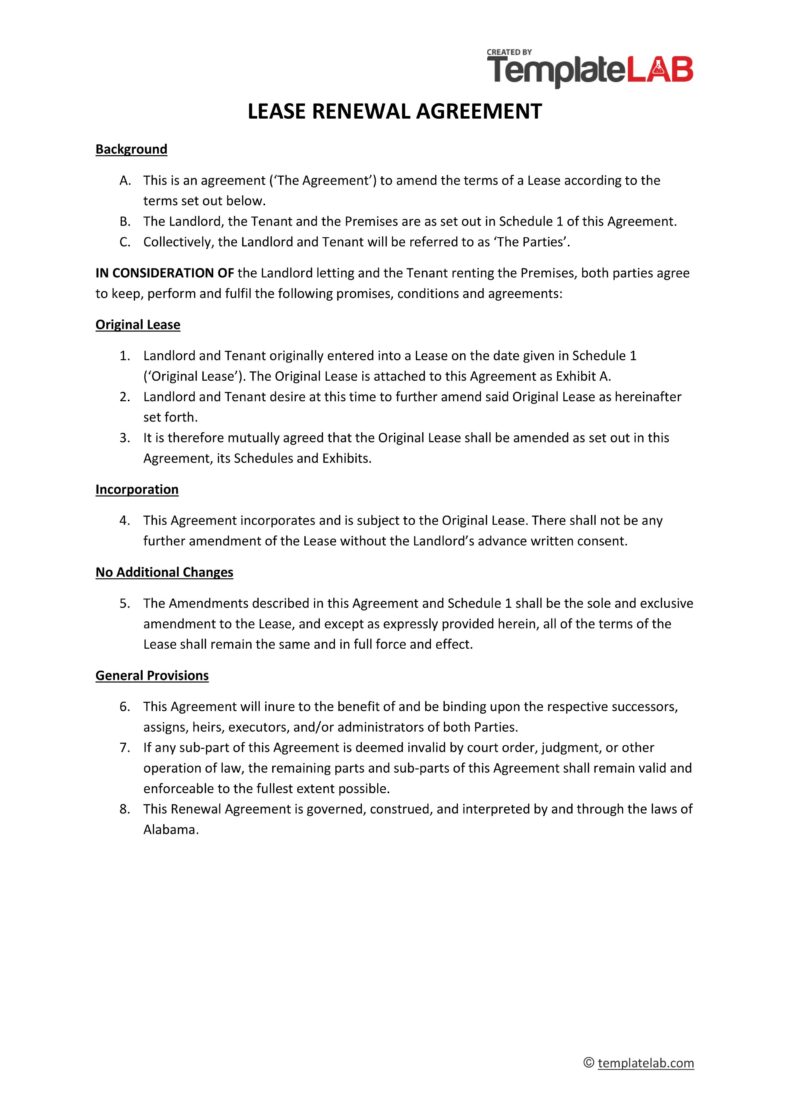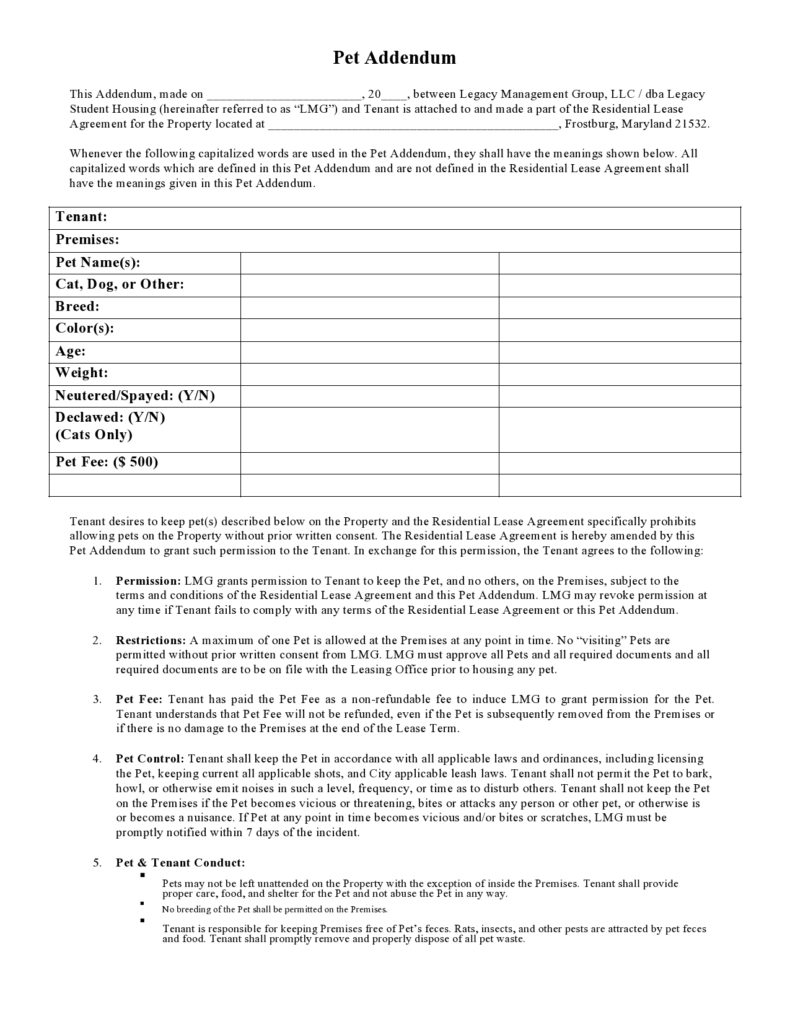If you have a will, at some point, you might want to make additions that will modify, revoke, or explain the contents of your will. To do this, you need a codicil form. This is an official document that permits you to make modifications to the contents of your will instead of having to completely replace or rewrite the original document.
Table of Contents
Codicil Forms
What does a codicil mean?
The codicil form is a document used to amend, alter, revoke, explain, or add to an existing last will and testament. If you want to make any significant changes that have an impact on the arrangements and dispositions after your death, you will need this document.
A codicil example is highly recommended when you want to make a relatively minor change in your will, although such a change won’t substantially re-write the whole document. You can conveniently use a codicil to will for small changes and when you want to make minor changes at a time.
For example, if you want to add a new property to your will or include a grandchild who wasn’t born yet when you created your original Will. Using this document works perfectly for these kinds of scenarios. In general, you use this document:
- To include new beneficiaries.
- To change the executor of your existing will.
- To add new assets or properties to your will.
- To make small changes to a beneficiary inheritance.
- In the case of changes in marriage or other relationships.
- For other changes.
It’s always a good move to consult with your lawyer if think you need this document or if you’re not certain about your situation. All of these examples situations are suitable for using codicils because it is relatively straightforward to create the amendments.
Beneficiaries in these scenarios aren’t likely to dispute the codicil, so their addition at some later time is also less likely to cause issues when it’s time to execute your will. But when the changes in your will involve big things, completely working your beneficiary structure, or removing all of your beneficiaries, it’s often better to create a new will.
When making too many alterations in your will, chances are, you will spend just as much as creating a new will. Moreover, a new will with a new date and completely new information will less likely get contested than a complex codicil with the original version of your will still available.
Free Codicil Forms
How to amend a will?
Many people think that making changes to a will is a difficult task but it’s much easier than expected. It doesn’t involve re-drafting your whole estate plan. The most recent version of your will should carry the changes stated in the codicil form.
Then the testator must affix their signature in accordance with the law of your state. Here are the steps to amending your will:
- Find the most recent version of your will
To complete the free codicil form, you need to have the effective date from your latest will along with a reference of the sections you want to change. You need the original copy of your will. Give this to the testator so they can give it a read-through to make sure that there aren’t any inconsistencies. - Decide what to change
You can amend anything in your Will can get amended using a codicil to will. Examples of these include your beneficiaries, executor, personal representative, or any other part involving the transfer of estate. Take note of the language and sections that you want to amend. You must reference these specific sections in your codicil. - Compose the codicil
This document is very simple and basic. You just need to include:
The name of the testator
The address of the testator
The creation date of your will
The declarations or changes to your Will - Affix your signature
The signing of this document requires two witnesses and having them witness as you sign. Then they will sign the document too. If you want to add another layer of security, you can choose to attach a self-proving affidavit to your will.
This requires the witnesses to state under oath that they witnessed your execution of the codicil. Apart from the witnesses, a notary public is also required for this attachment to become valid. - Attach the codicil to your will
After attaching, distribute your will to the members of your family or other beneficiaries. For security reasons, it’s recommended to provide a copy to your personal lawyer for safekeeping. At this point, you have successfully made an amendment to your will.
Codicil Templates
Can I add a codicil to my will without a lawyer?
You have two options if you plan to make modifications to your will after you have signed it along with your witnesses. First, you can make a codicil form to your existing will. Second, you can create a new will.
If you only need to make a couple of changes, then a codicil to will is the functional option. You can compare this to a “PS” to your will. To create this, you need to first write what you want to add to or remove from your will, sign the document, then have two witnesses sign it too.
Attach the codicil to your will. After your death, these two documents will get read and executed together. You can compose this document yourself or have a lawyer draft it for you.
Usually, though, it makes more sense to create a new will. Codicils usually involve the possibility of confusion that might result in having add-ons to a will. It’s better to revoke your old will and create a new one to lessen these possibilities.
Moreover, with a new will, there won’t be any additional sheets that might potentially get misconstrued or lost. In addition, creating a new will using software or templates is much easier than creating your own codicil.
Addendums To Will
How do I write a codicil to my will?
Sometimes, after writing your last will and testament, you might decide to change some parts of this document. This is when you can use a codicil form. This is a separate document that amends your original will. When composing a codicil example, follow these steps:
- Identify what changes you want to make
Before introducing an addendum to will, you need to review it first to identify the exact sections you want to change. It doesn’t matter how you have divided your will, as long as you can find the title of the section you will amend. Write this section in the document to make it easier to find.
As soon as you have identified the parts of your will that you want to revise, write down the new information. For instance, if your original will states that you want to leave a coin collection to your sister but later, you decide later you want to leave this collection to your grandchild.
State where this information is in your original will then indicate your new preference – that your coin collection will go to your grandchild. Do this for each part of your will you plan to change. - Type all of the changes carefully
Take your time when typing this document. You can always go back to your original will to determine what language to use as the header of your will – then use the same on this document.
Include a statement that identifies your original will by date. Add all of the new provisions. Also, include a statement that indicates that all of the other provisions of your will won’t get changed.
You also have to state that the balance of your will won’t be entirely revoked by the codicil. Instead, this document only changes the sections of the Will you have indicated in the way you have stated. - Sign the codicil and date it
Remember that a Codicil that doesn’t have a signature and date has no validity whatsoever. It must have your signature to indicate that its contents show your desires. this document also needs to have a date to provide a probate court with information when you created it in relation to your original will.
Various states have varying rules regarding having witnesses as a requirement to sign the last will. In the same way, some states also require the signature of a witness or even two witnesses for a Codicil to become valid. Take time to go through your state laws and determine if you need witnesses for this document. - Attach the codicil to your will and store it securely
Make sure to keep your will and codicil in a secure place. If you filed your will with a court, you must do the same for your codicil. As much as possible, have all of your estate planning documentation in a single place as this will help your heirs avoid issues after your death.
If you don’t think that you can compose this document, you can always seek assistance from a lawyer. Also, if you’re planning to make numerous or substantial changes to your existing will, you might want to think about rewriting the whole will. In such a case, it’s recommended to seek help from an estate planning lawyer.

